Reading nature books is a pleasure for anyone with an interest in natural history, plantlife and British wildlife. Books can introduce you to new species, places to visit, compelling rural life stories, brilliant walking routes and give you knowledge to help you appreciate and understand the natural world around you. Curling up with a good book to enjoy the simple pleasure of reading is not just a way to acquire new knowledge, but reading can also help you relax and truly be in the moment. Books also make perfect presents for outdoor lovers, offering inspiration, beautiful images and all-year-round armchair escapes.
We’ve reviewed more than 30 of the best new nature books to put together this selection, including titles on wildlife, gardening, history, landscapes, walking, and cookbooks filled with delicious seasonal recipes.
Dive into a good book with our pick of the best nature books below.
Best nature books in 2025
Twelve Words for Moss
by Elizabeth-Jane Burnett, Allen Lane, £16.99 (PB)
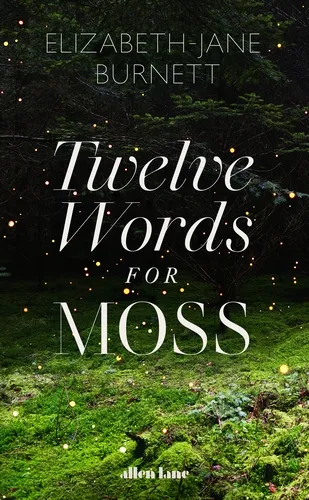
In this luminous book, poetry and dreamy prose weave a strange kind of mossy magic. Taking the “most overlooked of life forms” as her inspiration, Burnett explores intriguing parallels between the lives of mosses and her own. She meets an abundance of them in wetlands around the UK, visiting raised bogs and reedbeds, damp caves, rewilded fens and Welsh rainforests, and also finds them close to hand, flourishing in the garden path of her childhood home near Dartmoor.
Burnett doesn’t just crouch down to observe mosses. She listens to, strokes and waters them, curls up among them, sings to them, even goes bog swimming with sphagnum. We learn that these ancient little plants, which are both rootless and flowerless, can not only grow without soil but even create it. Seen close-up, mosses come in a dazzling array of forms – feathered swords, leafy flounces, glistening cushions, sugar-spun filaments, flashing like glow sticks in the dark. Yet in English, they tend to have blandly descriptive names, or none at all, so Burnett invents her own: Ginger Spice, Tiny Dancer, Firework, and her favourite, Glowflake.
This is an intense book that rewards careful reading. I took my time over it, absorbing a few pages and then letting the beautiful, unforgettable imagery soak in. Burnett is a unique voice and one of our most original nature writers.
Ben Hoare, naturalist and author
Undercurrent: A Cornish Memoir of Poverty, Nature and Resilience
by Natasha Carthew, Coronet, £16.99 (HB)
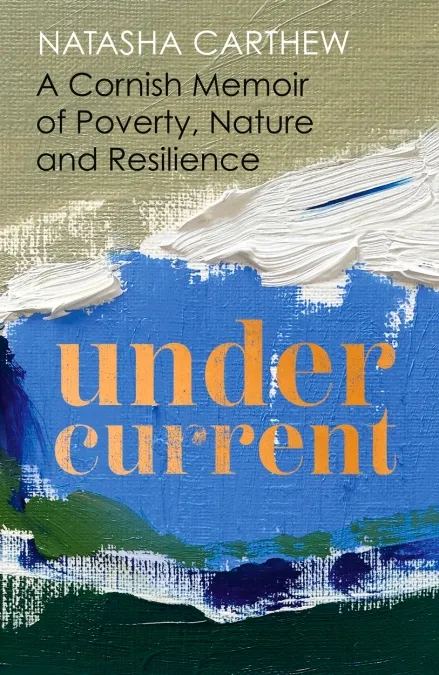
These things drew me in. Tough and lovely prose. The Cornish poverty theme contributing to the conversation begun by Catrina Davies (Homesick; Why I Live in a Shed), Raynor Winn (The Salt Path) and Simon Reeve’s TV documentaries. Downderry, where much of the book is set and where earlier this year I slept in a church, wondering at the cheek-by-jowl thrust of council estates and millionaire mansions. Now, thanks to this memoir, I know.
This is poet Natasha Carthew’s gripping account of her turbulent working-class Downderry childhood. Her narrative is interspersed with information about the unemployment, alcoholism and homelessness against which her own vivid story is set. Familiar poverty traps such as substance abuse, she demonstrates, are exacerbated by the inadequate housing, employment, transport and youth services that come with the rural peninsula.
Despite her beautifully expressed rootedness to the rocks, flowers, beaches and seas of her home turf, Natasha, like so many others, felt forced to leave. “Chase down your dream or watch it go down the toilet as you scrub about with a posh person’s scented bog-brush,” she writes.
Second homes and tourists enhance the problems. No wonder she gives them short shrift, forcing us to see beyond our holidays and the alluring photographs in magazines. She tells her story with poetry and power.
Julie Brominicks, landscape writer
Wild Air: In search of birdsong
by James Macdonald Lockhart, 4th Estate, £18.99 (HB)
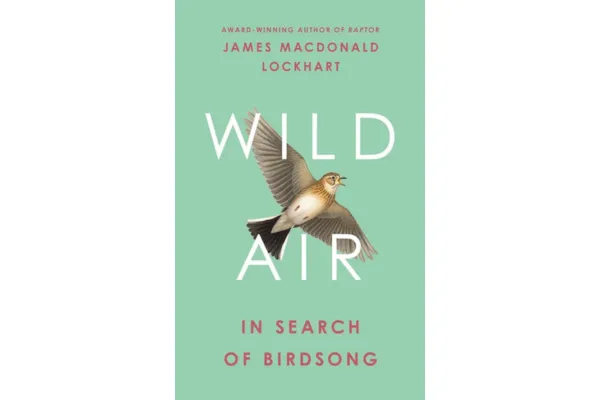
Only a very few bird sounds can be written easily in words. Chiffchaffs and kittiwakes are two, and it’s no coincidence that both get their common names from their songs or calls. So James Macdonald Lockhart, an editor and literary agent, has taken on a brave challenge in his book Wild Air: In Search of Birdsong to focus exclusively on something that is – by its very nature – almost impossible to pin down in human language.
He selects eight birds, from celebrated songsters such as nightingales and skylarks to species less renowned, such as shearwaters, and uses their songs as a way to explore their loves and lives. And for some, such as the nightingale, this works brilliantly, even though it’s hard to be sure exactly what a “sputnik-beep” is.
Under the auditory spotlight, the nightjar’s churr is an elaborate and sophisticated tool that reveals much about this most cryptic of birds. As much as anything, Macdonald Lockhart’s skills as a naturalist are second to none, his observations of skylarks especially fresh and sharp.
The call of the Manx shearwater, on the other hand, is arguably so unearthly that any attempt to write about it feels doomed. Macdonald Lockhart tries to verbalise it with “er-kuk-kuk-coo-er”, and variations thereof, none of which feel remotely helpful.
Still, reading Wild Air will surely make any one of us listen to beautiful songs of common birds such as blackbirds and wonder: what are they saying? What are they feeling?
James Fair, wildlife journalist
One Thousand Shades of Green: A Year in Search of Britain’s Wild Plants
by Mike Dilger, Bloomsbury Wildlife, £17.99 (HB)
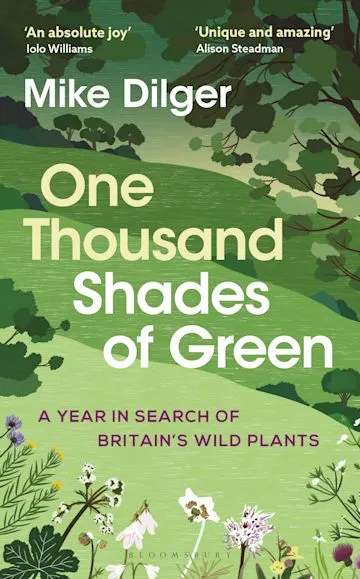
When Covid shook the world, presenter and author Mike Dilger (One Show and Gadget Show) was forced to take a slower pace of life.
After years of chasing the moving targets of the UK’s bird and wildlife population, he set his camera sights on something far less mobile, namely Britain’s flora. Across the course of a turbulent year, strewn with lockdowns and travel restrictions, he sought to find and document 1,000 different species of UK plant.
Reminiscent of a Victorian plant hunter (a comparison he also sees himself), often with family in tow, the book sees him risking injury, prosecution and even the threat of violence to document such botanic marvels as Alpine milk vetch, Teesdale sandwort and the spotted rockrose.
Bordering on the obsessional, the quest takes over nearly all of his spare time as he tries to balance his work commitments. This sees him traveling all over the UK, from the limestone Mendips of Somerset and chalky downs of Wiltshire to the acidic Caledonian forests of Scotland. It creates a travelogue element to the book which merges with part diary/part field guide.
With a down-to-earth style, Dilger’s self-deprecating sense of humour and more than a healthy dose of enthusiasm, it’s an immediately accessible book, one I can see being enjoyed by a wide range of people from botanists and plant enthusiasts to armchair explorers.
Reviewed by Dave Hamilton, horticulturalist and author
Sea Bean
By Sally Huband, Hutchinson Heinemann, £18.99 (HB)
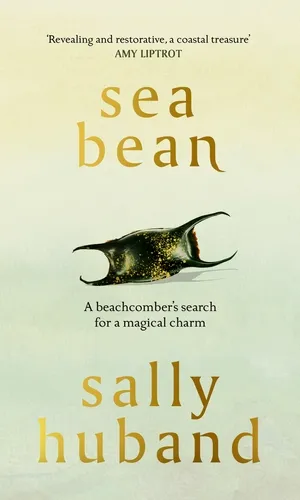
Sea beans are the seeds of tropical vines that drift from the Americas, sometimes for decades, before miraculously reaching our shores. Fishing folk once treasured them as tiny talismans.
Newly settled in Shetland with her young family, Sally Huband begins searching for one of her own. Her all-consuming quest lies at the heart of this gently paced yet gutsy, often achingly beautiful memoir, in which the ocean and its gifts are never far away.
Unmoored by motherhood, Huband is struggling to find her place in the remote island community, and her painful joints are made worse by the relentless wind. But she discovers a new identity as a beachcomber. “Instead of fearing storms, I began to watch for them,” she says.
Beachcombing turns out to be a balm for body and mind, a restorative ritual that takes Huband around the Shetland archipelago and to Orkney, Fair Isle, the Faroes and Netherlands. She meets fellow beach-scourers, surveys the rich marine wildlife and falls in love with ‘sea post’, the ancient custom of casting messages adrift in bottles.
Sea Bean has much to say about Shetland culture and the tough, tragic history of its people, especially the women. It is mournful, introspective yet full of hope – a brilliantly salty blast of fresh air.
Reviewed by Ben Hoare, author and naturalist
Across a Waking Land: A 1,000-mile walk through a British spring
by Roger Morgan-Grenville, Icon Books, £18 (HB)
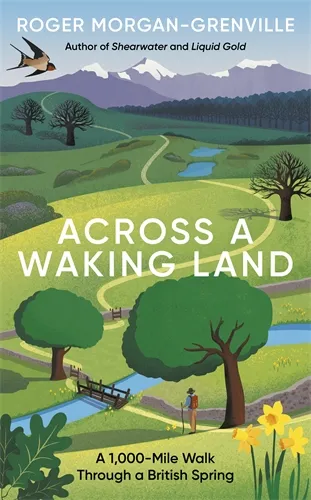
Some of the most impressive achievements are in equal parts admirable and bonkers. So it is with the mission Roger Morgan-Grenville planned in spring 2022. The soldier turned curlew conservationist and nature writer decided to tackle a nigh-on 1,000-mile trek from the Solent to Cape Wrath, largely alone and avoiding roads, to visit as many nature restoration projects as possible, while keeping pace with the northward march of greening oaks.
Quests and pilgrimages, where writers ramble, cycle, swim or kayak around our islands in search of various kinds of enlightenment, have become a familiar bookshop staple. Over-familiar, you might say. But Morgan-Grenville – whose books include 2021’s brilliant Shearwater – is a genial and witty companion who keeps us interested to the last few steps.
He covers the ground in 57 days (with six days off), fuelled by porridge, Mars Bars and a thousand conversations with strangers. He encounters plagues of poo bags and non-native Sitka spruce, develops an intense dislike of stiles, passes through glorious scenery, and, above all, learns to live in the moment. Though saddened by how rare is to meet anyone under 20 in the wilds, he is encouraged by the army of people battling to restore Britain’s natural riches.
This is a heartwarming, inspirational book that shows why, if we want a wilder future, we will all have to fight for it.
Reviewed by Ben Hoare, naturalist and author
Black Ops and Beaver Bombing: Adventures with Britain's Wild Mammals
By Fiona Matthews and Tim Kendall, Oneworld Publications, £17.99 (HB)
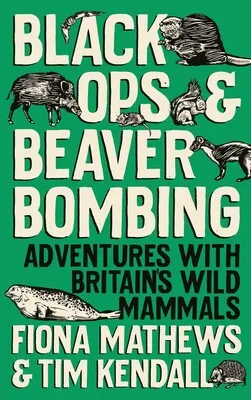
Spring has barely ticked over into summer, but I’ve already found the book that I’ll be recommending for the rest of the year. Co-authored by a wife-and-husband team (she a leading conservationist and professor of environmental biology, he a creative writer and professor of English literature), this book celebrates, mourns and champions the British mammals that are the beating heart of these islands.
Each chapter introduces us to a new star: beavers, wild boars, pine martens, water voles, bats, hedgehogs, squirrels and grey seals. Each is peppered with extraordinary facts: baby boars are called humbugs because of their adorable rotundity and black-and-white stripes, and some bat species are the only non-primate animals known to enjoy oral sex.
The book also contains wonderful literary nuggets (including evidence that Shakespeare hated hedgehogs) and appalling puns. Yet this is far from a light-hearted romp through the British countryside, and the (often horrifying) statistics and meticulous research are ever-present in the narrative, which never shies away from complexity and ambiguity.
There are no straightforward conclusions, no easy solutions, and this is not always an easy read. But there is hope, and much of it comes from humans. For this is a call to arms, a celebration of “what can be achieved when we hold administrations to account”.
Reviewed by Eleanor Rosamund Barraclough, historian
Enchantment: Reawakening Wonder in an Exhausted Age
By Katherine May, Faber, £16.99 (HB)
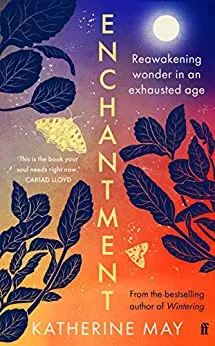
Wonder and awe do not necessarily come from seeing beautiful things – a glorious view, say – but from deep engagement and close attention to the world around us. As Katherine May reveals, they can be about standing in the fresh air at sunrise, going barefoot, feeling the pull of the tide during a sea swim, watching the moon (“an excellent confidante”) alone in the early hours. An act as simple as touching stone helps anchor us: “There is a definite coupling… a communication of density, a heat exchange.”
This might sound a little hippieish, but Enchantment: Reawakening Wonder in an Exhausted Age is poetic and profound. Written in response to the pandemic, it’s a manual for living fully and well – above all outdoors – by rediscovering the instinctive ability we had as children to sense magic in the everyday.
May shows the value of learning with our hands as well as our heads (by trying traditional crafts, for example). And she marvels at how our ancestors saw the divine in everything and walked through landscapes of memory and myth, with “grand stories” unfolding around them as they went about their daily business.
As with May’s last book, the critically acclaimed Wintering, Enchantment weaves memoir with nature writing, history and gentle philosophy to re-enchant us with the things that really matter.
The book offers an antidote to modern life’s digital distractions and endless rolling news cycle, which so often leave us running on empty.
Reviewed by Ben Hoare, naturalist and author
Grounded: a Journey into the Landscapes of Our Ancestors
By James Canton, Canongate, £18.99 (HB)
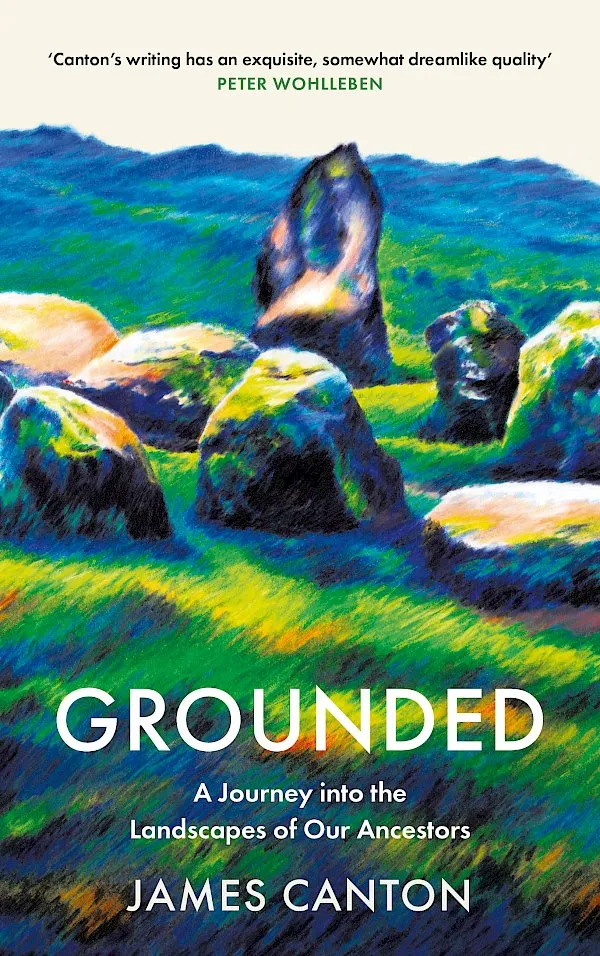
By James Canton
James Canton is curious. What makes a place sacred? He visits sites near his home in South England, such as the chapel at Little Gidding and the long barrow at West Kennet. Canton wants to “step into the minds” of the people who created or venerated constructions, groves, stones and icons. His journey is geographical, spiritual and one of historical and prehistorical discovery.
This book sits comfortably with others produced in lockdown that encourage us to re-engage with our immediate natural environment. Familiar, too, is how Canton, like Robert Macfarlane and others, engages friends and experts, fostering credibility but also a sense of gentle companionship. Ideas come to him while swigging coffee, driving or watching his daughters perform tasks, his home environment providing narrative and context.
“The Bronze Age people who lived on these lands 5,000 years ago kept the memory of their loved ones alive with physical body parts. I thought of my granddad’s ashes kept in the urn and of his spoon, which I still had in my kitchen.”
Despite recognising that we simply cannot be sure what people who lived millennia ago thought, through his study and patient reimaginings, Canton does a good job of demonstrating that we are not so different from them. With that, we understand that what we can learn from them (particularly from those who lived in the Mesolithic Age) is relevant.
Reviewed by Julie Brominicks, landscape writer
The Lost Rainforests of Britain
by Guy Shrubsole, William Collins, £20 (HB)
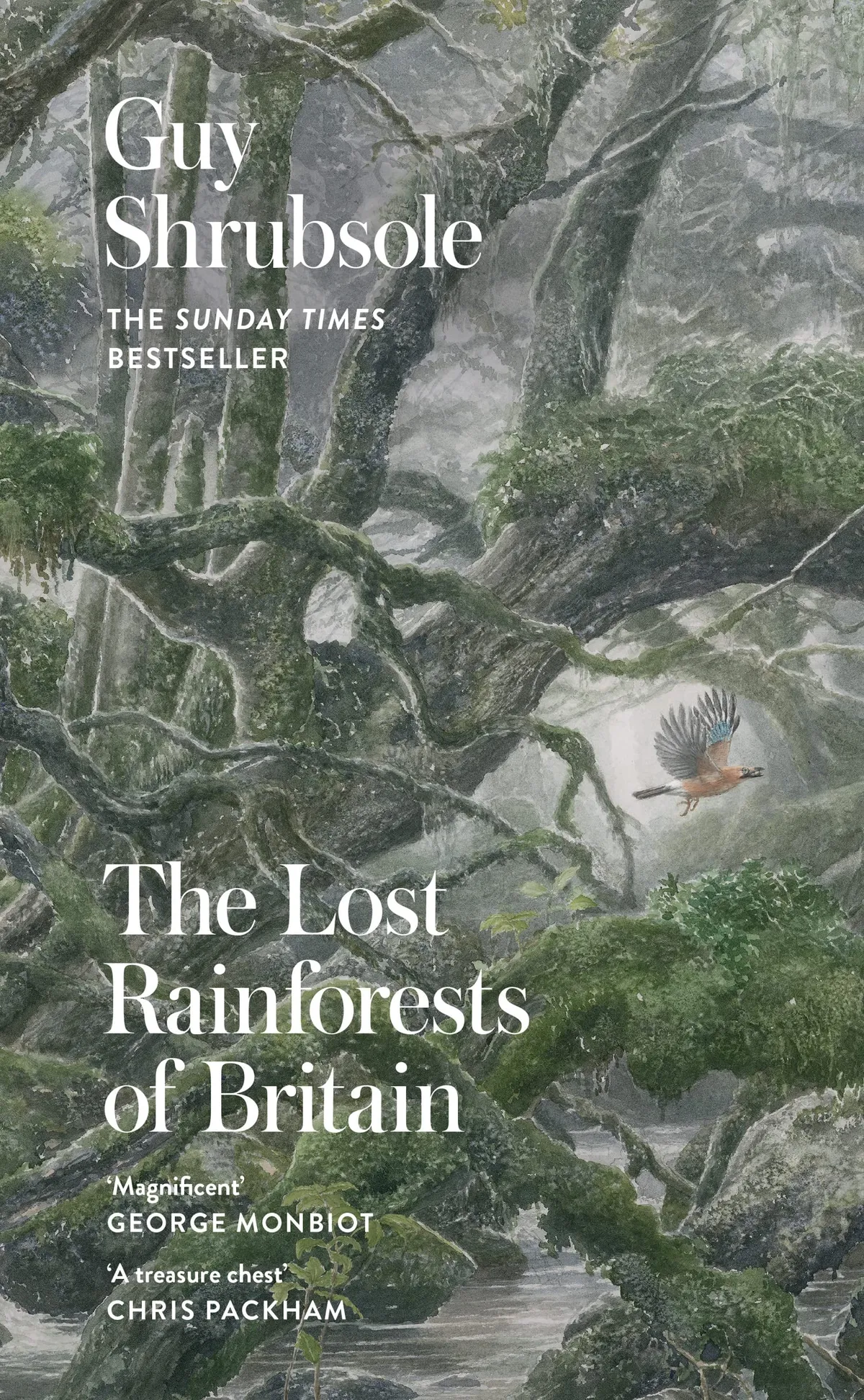
Packed with fascinating history and legendary tales, The Lost Rainforests of Britain highlights the loss of our woodlands over the centuries. Guy Shrubsole’s wealth of research brings our ‘home grown’ rainforests to life and inspires intervention to help restore them.
How to Photograph Garden Birds
by Mark Carwardine, Bloomsbury Publishing, £18.99 (PB)
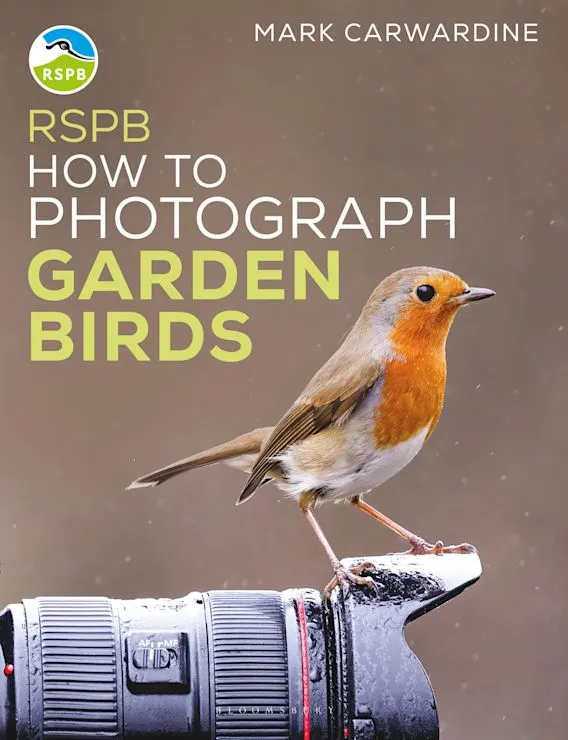
Renowned wildlife photographer and zoologist Mark Carwardine has expert tips and tricks plus practical advice and projects to try, so you can take impressive images of common garden birds right on your own doorstep. Margaret Bartlett, production editor
Meadow
by Iain Parkinson, Kew Publishing, £25 (HB)

Traditional hay meadows are the rarest and most beguiling of all our farming landscapes. Strolling through one in high summer often results in sensory overload, such is the complexity of life sustained by the sward.
Jim Holden’s lush photography captures the vibrancy of these heavenly places, mixing down-among-the-stalks close-ups with sweeping vistas, and ranging from the wet meadows of the Thames floodplain north to the machair of Hebridean coasts. But he never forgets these are working environments – haymaking is the reason they exist – so there are as many pictures of farming techniques and ‘meadow folk’.
But this is far from a volume for the coffee-table. Iain Parkinson (he works at Wakehurst, Kew’s Sussex outpost) has also gathered around 30 interviews with land managers and horticulturalists, ecologists and surveyors, craftspeople and artists. The accounts are in the first-person, giving immediacy to their insights on scything, say, or seed viability.
Sadly, authentic farming voices are missing. This may reflect the nature of hay meadows in the 21st century, many of which are cared for by conservation organisations. Fragile relics of a bygone era, they can yet show us a better way of living with the land.
Reviewed by Ben Hoare, naturalist and author
Forty Farms
by Amy Bateman, Inspired by Lakeland, £29.90 (HB)
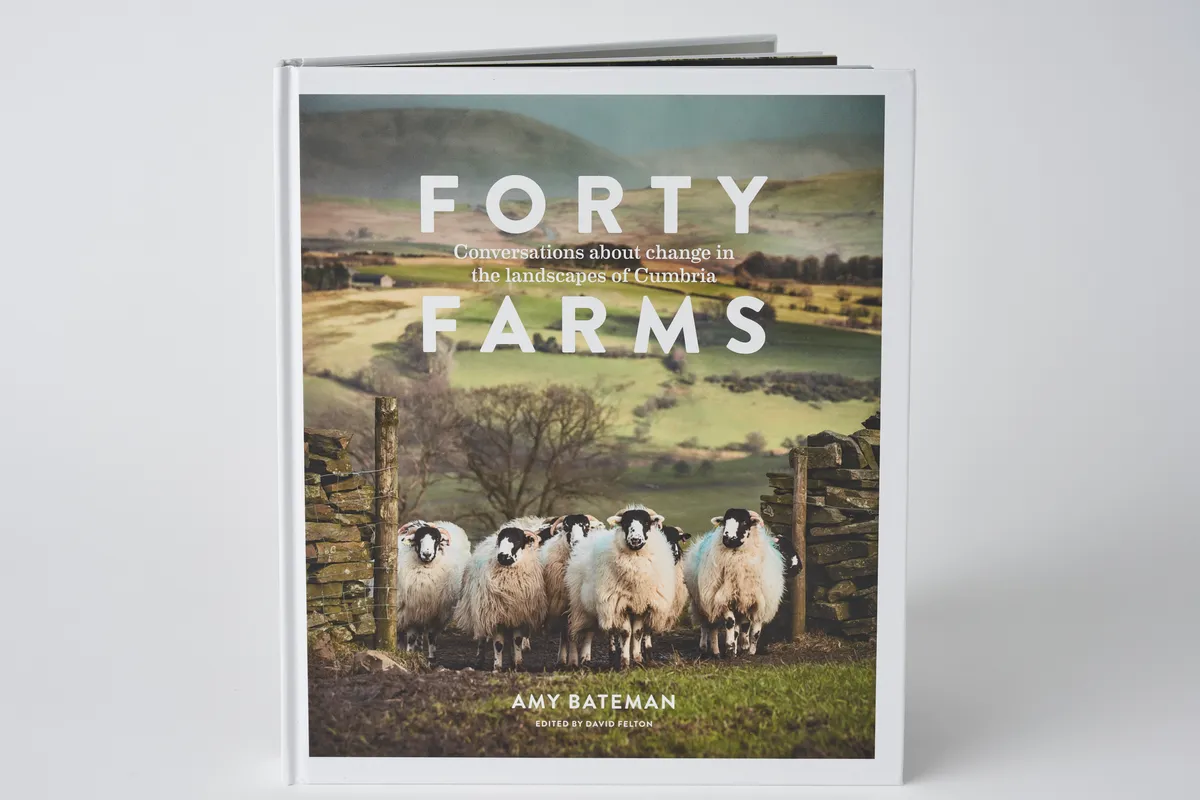
In March 2021, award-winning photographer Amy Bateman set out to tell the visual story of forty Cumbrian farms, at a time of profound change for our landscapes, climate and economy. From isolated farmsteads to businesses at the cutting edge of innovation, from Herdwick-grazing to cheese-making, this remarkable book offers illuminating insights into the everyday lives of extraordinary farmers.
Margaret Bartlett
Great Trees of Britain and Ireland
by Tony Hall, Kew Publishing, £25 (HB)
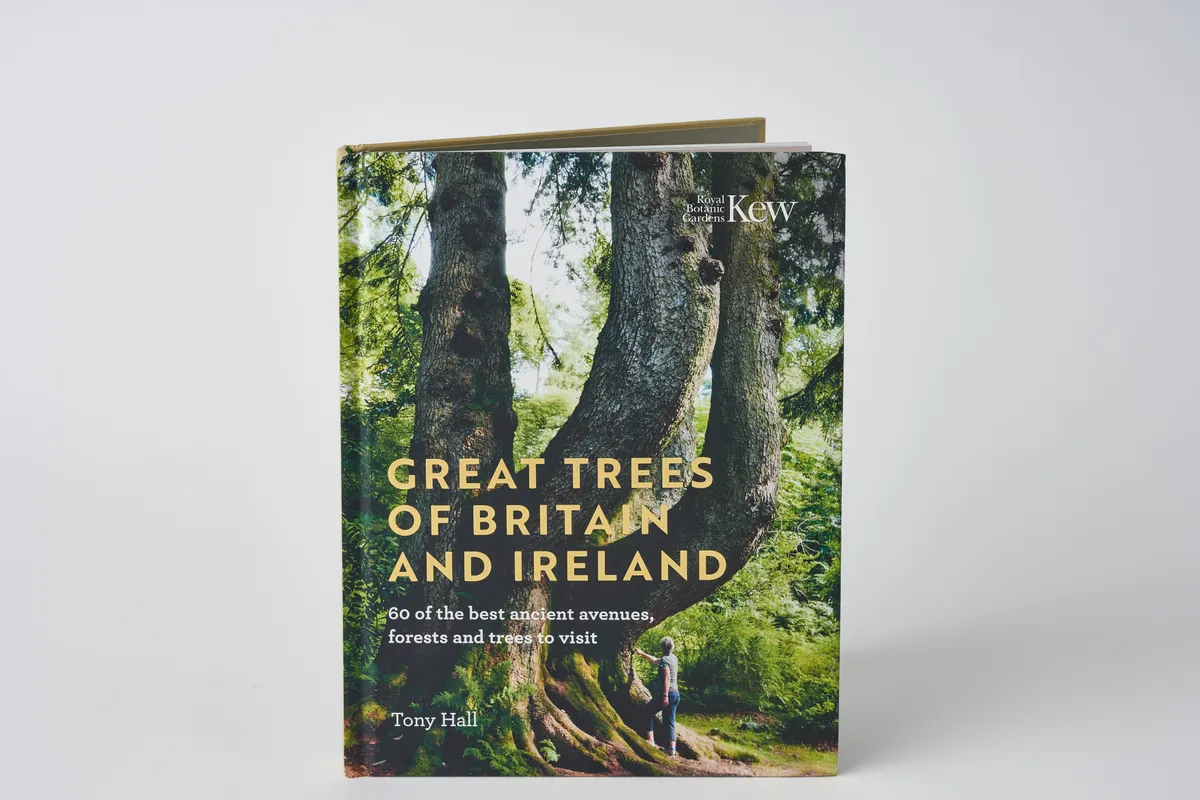
Royal Botanic Gardens, Kew arboretum manager Tony Hall profiles over 70 of our most majestic trees, avenues and forests in this beautifully photographed book. Explore remnants of the Caledonian Forest in the Highlands, learn about the ancient yew growing in the cloister of Ireland’s Muckross Abbey and discover Welsh oaks that witnessed 12th-century battles.
Margaret Bartlett
Landlines
by Raynor Winn, Michael Joseph, £20 (HB)
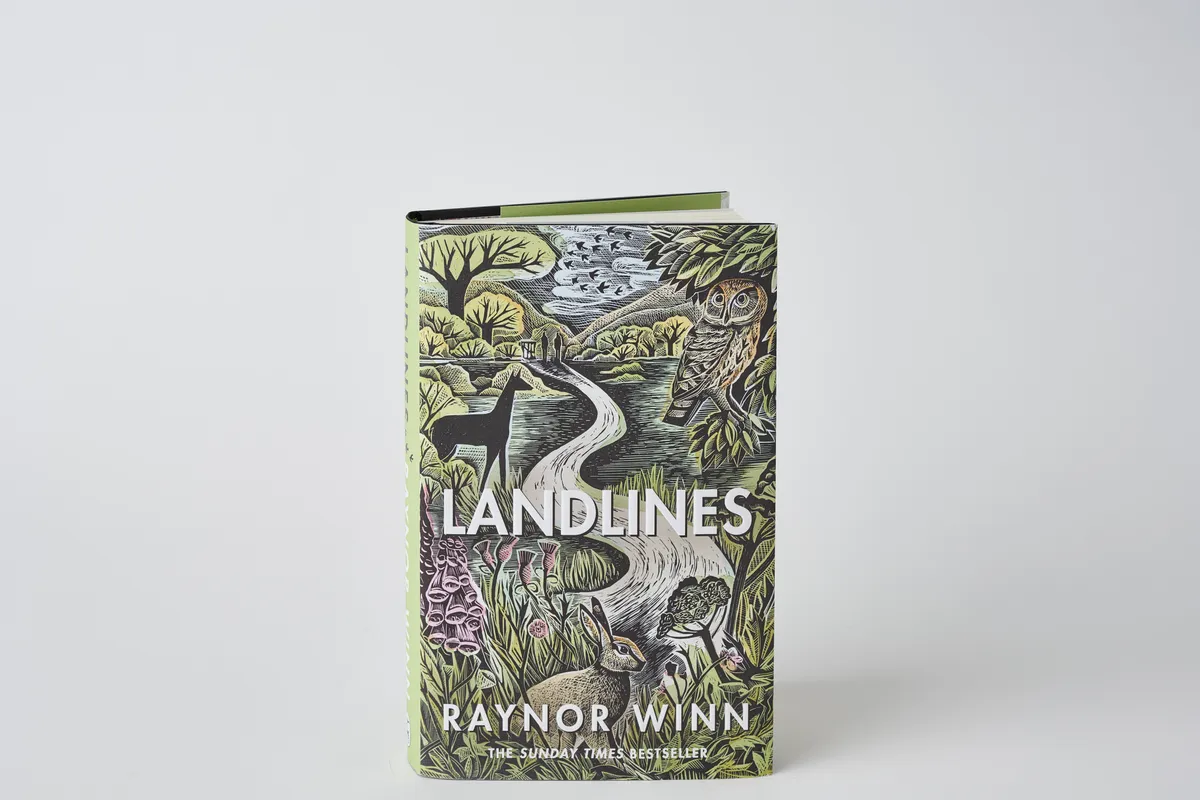
Our first encounter with the author Raynor Winn was – forgive the pun – a cliff- hanger. After losing her home and income, and following her husband Moth’s diagnosis of a terminal illness, the couple decide to walk the rugged 630-mile South West Coast Path. The outcome was her bestselling memoir, The Salt Path. We next caught up with Raynor and Moth in The Wild Silence as they settle in Cornwall, then hike Iceland’s Laugaveger Trail. Winn’s latest book, Landlines, finds them back in home territory, taking on the formidable Cape Wrath Trail in the Highlands.
Life has changed for the pair since The Salt Path. They are no longer homeless, nor penniless. But they face familiar challenges. Moth’s health is deteriorating, and taking on another arduous walk feels like a last-ditch attempt to stem its progress. Most people they meet on the trail are yomping south to north, heads down, ticking off the miles. Raynor and Moth amble in the opposite direction, and despite rain, wind and ill-fitting boots, they revel in the splendour of their surroundings and find healing in the total immersion in nature.
Fuelled by hope, and endless cups of tea, they wend their way south. When the Cape Wrath Trail ends, they have an important decision to make. Writing in her usual candid and engaging style, Winn guides us along the next – unexpectedly uplifting – stage of their journey. We, her readers, are privileged to walk alongside her.
Reviewed by Gail Simmons, travel and nature writer
Regenesis
by George Monbiot, Penguin, £20 (HB)

Subtitled Feeding the World Without Devouring the Planet, here, seasoned environmental campaigner George Monbiot calls for a revolution in the way we think about food production. Meticulously referenced, he draws on new soil ecology research that could allow us to farm less and restore our ecosystems while feeding more people. A hopeful vision of how we can rethink our relationship with nature.
Margaret Bartlett
100 Great Pub Walks
by Patrick Kinsella, National Trust, £12.99 (PB)
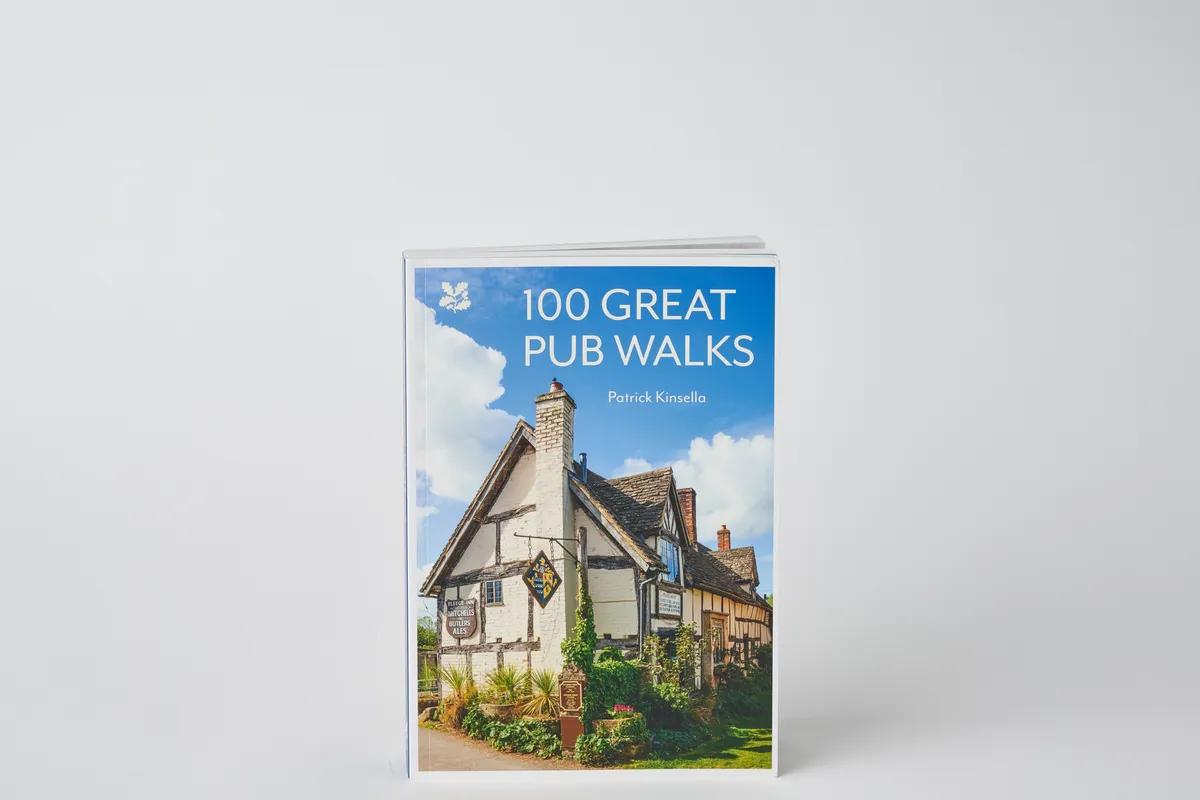
What better gift for a rambler than this delightful, clearly written and well researched guide to some of the UK’s best walks with watering holes en route? The descriptions include local history facts and seasonal nature to spot, and each walk is organised by region and graded according to difficulty. With ‘How to get there’ details and an easy-to-follow map, plus an OS Map reference, this is the ideal companion.
Margaret Bartlett
Birds
by Jim Moir, unbound, £14.99 (HB)
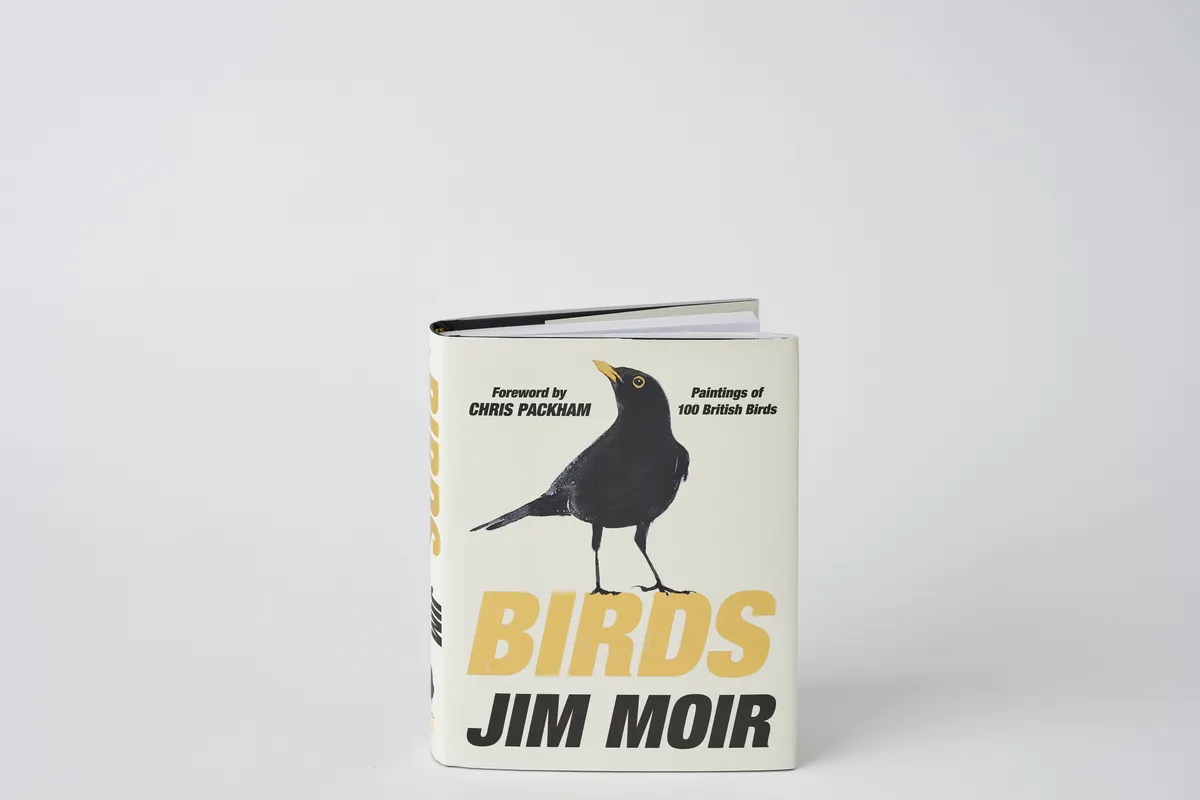
Most famous for his comedy TV shows, Jim Moir, AKA Vic Reeves, is also a successful artist. With a short foreward by Chris Packham, this charming book brings together 100 of his beautifully detailed bird portraits, each with a brief accompanying fun fact. King James I kept an aviary of cormorants to catch his fish; the barn owl’s neck has twice as many vertebrae as a human’s, and wee puffins are ‘pufflings’.
Margaret Bartlett
Two for Joy
by Adam Henson, Sphere, £20 (HB)

Countryfile presenter and Cotswolds farmer Adam Henson offers delightful and meaningful ways to reconnect with the British countryside in this journey through the seasons. Learn which birds to listen for in spring, find out what’s happening on the farm each month of the year, read the stories behind countryside superstitions, identify animal footprints and try a spot of stargazing, too.
Margaret Bartlett
The Secret World of Plants
by Ben Hoare, DK Books, £20 (HB)

A treasure trove for children (aged seven and over) interested in the natural world, this gorgeous gilded book clearly explains the essentials of plant science and unveils the mysteries of more than 100 varieties of fascinating flora. Learn about plants with seeds the size of footballs, how seagrass flowers underwater and find out which moss was used instead of nappies!
Margaret Bartlett
The Biggest Footprint
by Rob and Tom Sears, Canongate, £14.99 (HB)

Ever heard of smoosh theory? Making use of mind-boggling maths, the Sears brothers bring the issue of climate change into sharp relief in this fact-packed book, winner of the 2022 Wainwright Prize for Children’s Nature and Conservation Writing. The brothers’ beautifully illustrated giant smooshed human slowly starts to understand the problems it has created for the planet, and how it might fix this “mega mess”.
Arboretum
by Katie Scott and Tony Kirkham, Big Picture Press, £20 (HB)
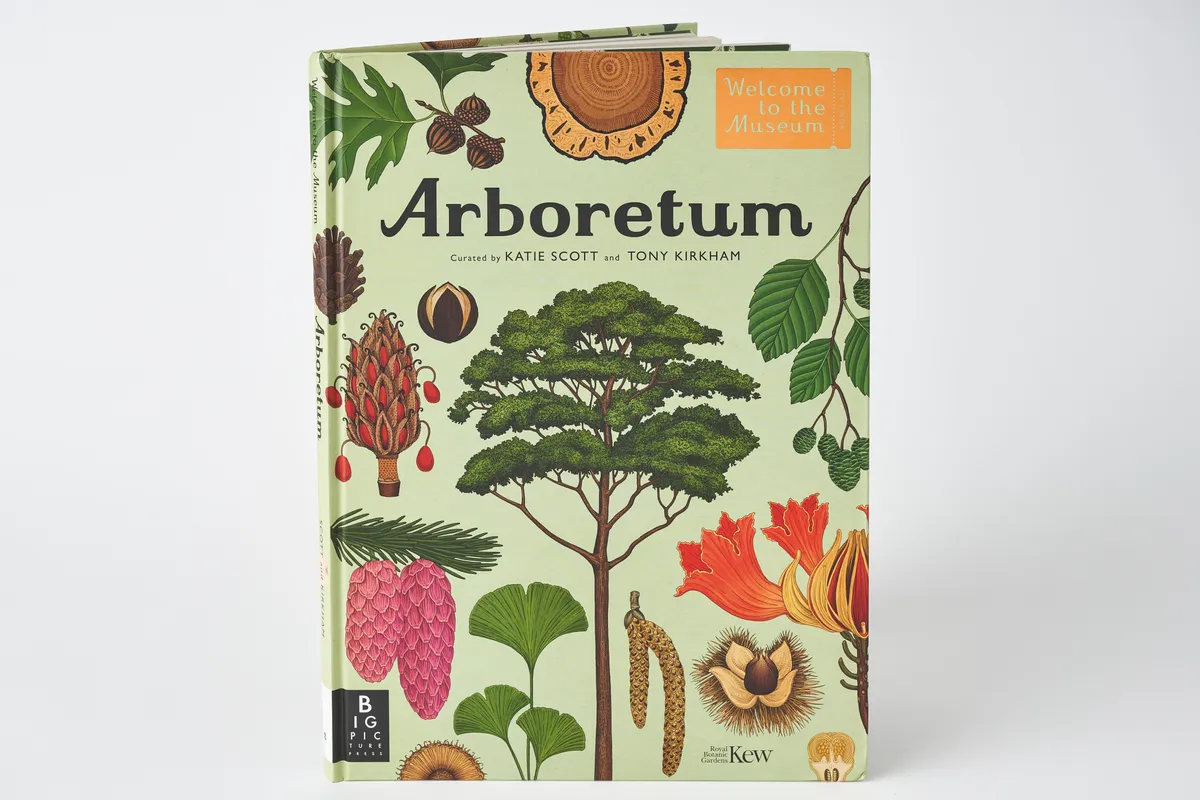
The latest in the beautifully illustrated large-format Welcome to the Museum series, Arboretum introduces young readers to trees from around the world and celebrates the vital role they play in sustaining life on this planet. Learn about mighty oaks and towering redwoods, plus exotic and unusual trees, through Katie Scott’s exquisite botanical drawings.
Margaret Bartlett
The Kew Gardens Cookbook
Edited by Jenny Linford, Kew Publishing, £18 (HB)
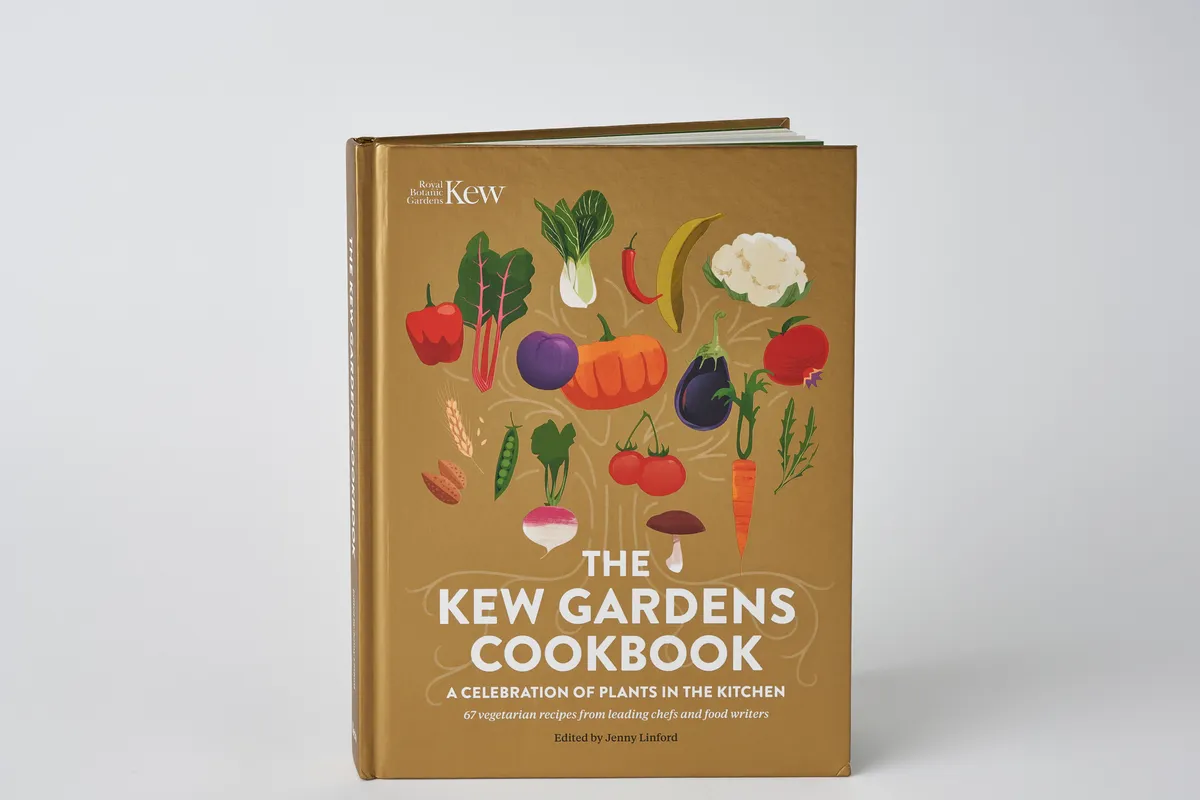
This inspiring collection of over 60 exciting vegetarian recipes celebrates the many and varied ways plants can be used in the kitchen, with the wisdom of celebrated chefs and food writers, such as Yotam Ottolenghi, Rukmini Iyer and Thomasina Miers. Organised in six sections – including ‘Leaves’ and ‘Grains and Pulses’ – this book is sure to broaden culinary repertoires.
Margaret Bartlett
Country Church Monuments
by CB Newham, Particular Books, £40 (HB)

Over the span of 25 years, CB Newham visited over 8,000 rural churches in England and Wales, photographing and cataloguing their monumental funerary sculptures, from medieval brasses to marble effigies. Here he presents 365 of the finest, along with biographies of the deceased and their sculptors, creating a poignant record of often-forgotten art.
Margaret Bartlett
Wild: Tales from Early Medieval Britain
Amy Jeffs, Quercus, £20 (HB)
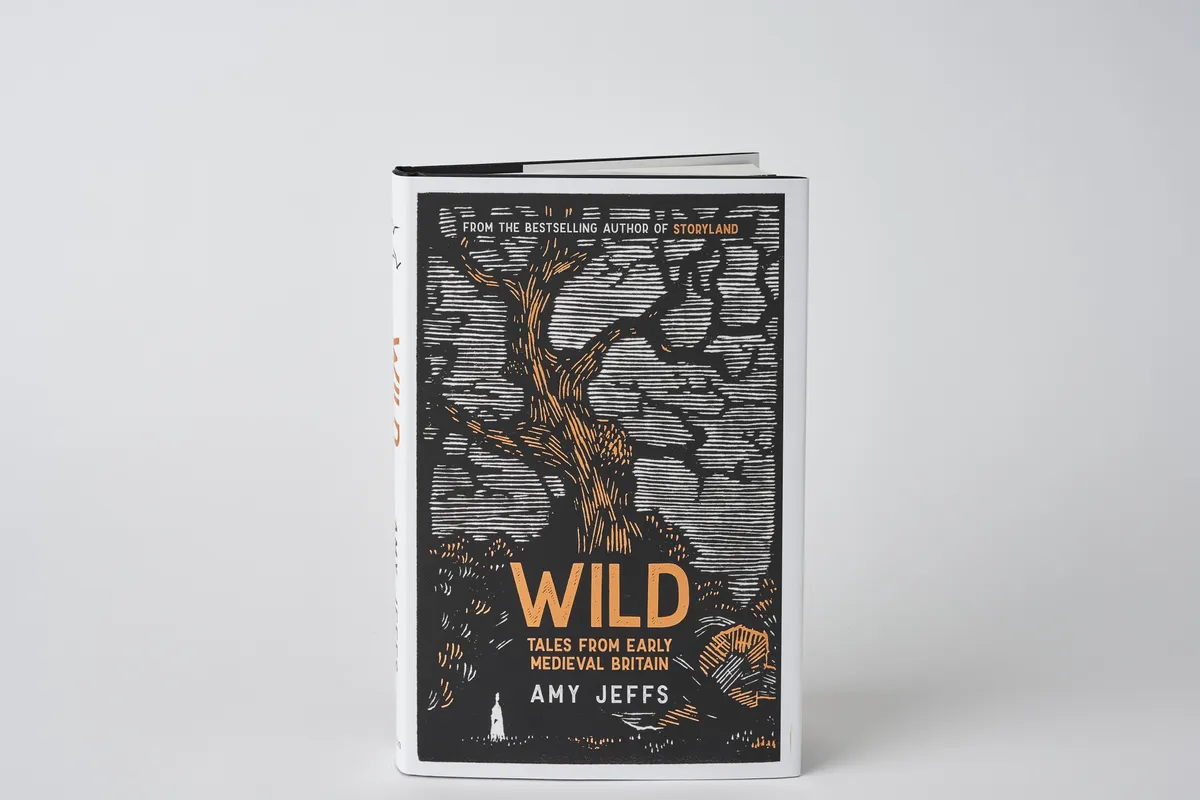
Inspired by words and images from early medieval Britain, artist and medievalist Amy Jeffs aims to rediscover and reimagine the wild landscapes preserved in Old English, medieval Welsh, old Irish and insular Latin literature. Jeffs has produced an extraordinarily multidimensional work, moving seamlessly from creative retellings of the stories to explanations of the texts and where they came from, underpinned all the time by sound academic understanding. Those reading the print version can marvel at the extraordinary black-and-white wood cuttings that break up the chapters, while those enjoying the audiobook version can listen to music inspired by the same tales.
Reviewed by Eleanor Rosamund Barraclough, historian
Cornerstones: Wild Forces That Can Change Our World
Benedict Macdonald, Bloomsbury, £17.99 (HB)
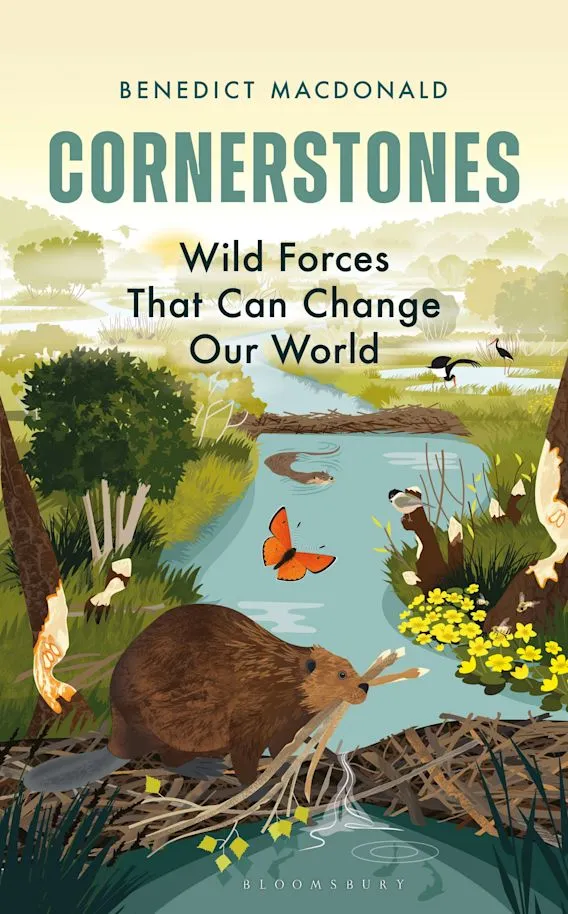
Could restoring key species, such as beavers, boars and wolves, help turn around our nature, climate and biodiversity crises? Award-winning writer and passionate advocate of rewilding, Benedict Macdonald shows us how these ecosystem engineers could revive our shattered natural habitats in this exciting and visionary book.
The Flow: Rivers, Water and Wildness
Amy-Jane Beer, Bloomsbury Wildlife, £18.99 (HB)
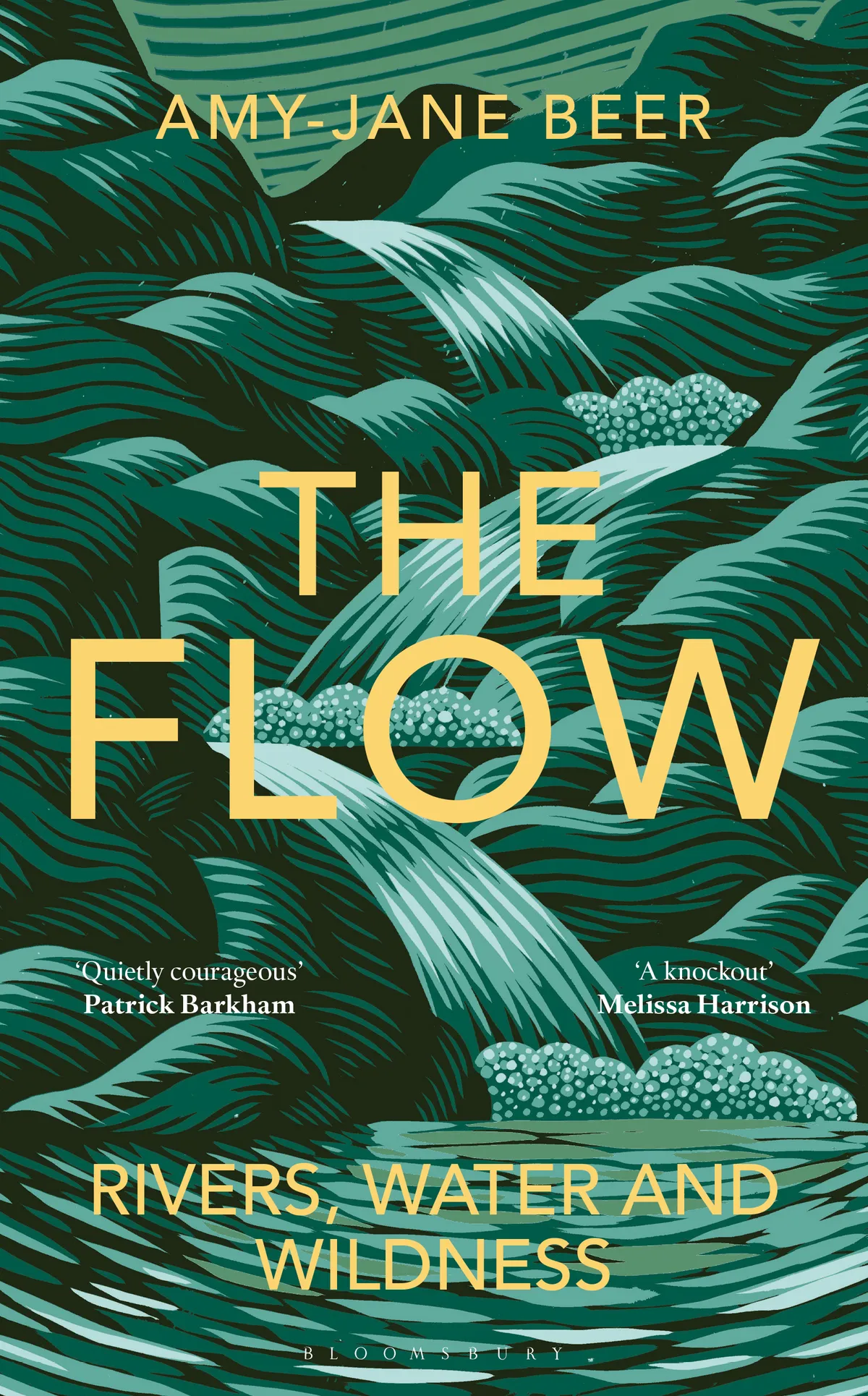
Compelled to reconnect with our rivers, some years after the fatal kayaking accident of a friend, author Amy-Jane Beer takes us on a journey across Britain to learn more about our waterways. Including folklore, etymology, biology and exciting, immersive wildlife encounters, Amy-Jane also highlights the perilous and polluted state of our rivers. In the words of our reviewer, this book is “necessary reading for us all”.
Grounded
Ruth Allen, Mortimer, £16.99 (HB)

“To be grounded is to put our feet on solid ground and put down roots or anchors within ourselves.”
So declares Ruth Allen, a psychotherapist who specialises in taking her clients out into the natural world. She explains how readers can reconnect with nature and, in so doing, become more attuned to themselves and more grounded as human beings. The goal is then to live “bravely and tenaciously”, full of the joy and wonder of being alive.
I confess that I tend to be wary of anything that looks like pop psychology but found Grounded to be full of wisdom and common sense. Allen’s tone is gentle and affirming and her vocabulary almost entirely jargon-free. She addresses a great many of our 21st-century neuroses and, by outlining various ways we can interact with nature, teases out the benefits of plugging ourselves back into our natural environment – even if the only scrap of accessible greenery is a patch of scrubby urban wasteland. And to get readers started, there are some practical yet thought-provoking exercises to try.
Illustrated throughout with glorious photographs of landscapes and wildlife, this book should inspire you not merely to get out into the natural world but also to forge a lasting and mutually beneficial relationship with it.
Reviewed by Dixe Wills, travel writer and author
SQUIRREL_13101087
The Book of the Earthworm
Sally Coulthard, Apollo, £14.99 (HB)
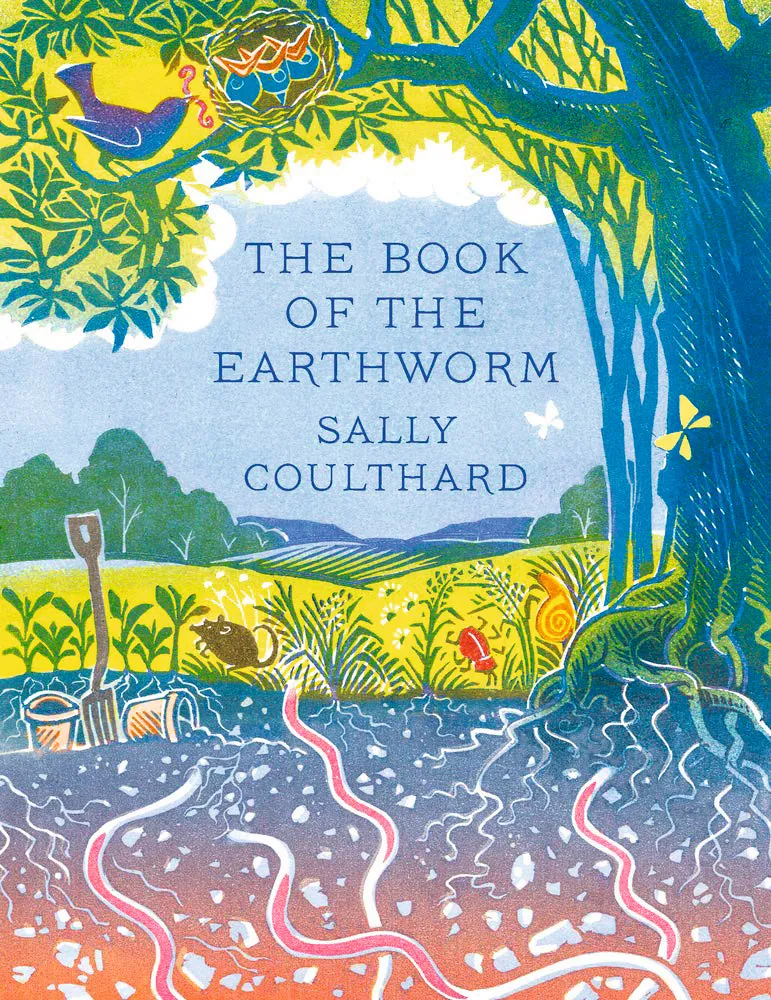
In 1881, Darwin published a seminal volume based on 40 years of painstaking study. A bestseller, it shifted more copies than any of his other works, surprising even the author, who told a friend: “My book has been received with almost laughable enthusiasm.” It was about earthworms.
This fabulous anecdote about The Formation of Vegetable Mould through the Action of Worms, with Observations on Their Habits (a title no publisher would allow today) is one of many wonderful wormy tales unearthed by Coulthard,
a smallholder and author from North Yorkshire. Her smart little book is aimed squarely at the gift market, with its many headings and boxes designed for dipping in, enlivened by delightfully retro linocut-style illustrations.
Some myths are quickly put to rest: no, earthworms can’t regrow if cut in half (they will only replace part of the tail), and no, they’re not completely blind (their skin is covered in light receptors). You can also eat them, though Coulthard counsels against it; apparently, a single common earthworm has the calorific content of two Brussels sprouts.
There’s plenty of country lore too, and entertaining summaries of scientific studies – for example, we learn that worms can make friends and in times of crisis will take risks. They may also – though researchers disagree on this – experience pain, so perhaps these engineers of the earth deserve a little more respect.
Reviewed by Ben Hoare, naturalist and author
Wildflowers for the Queen
Hugo Rittson Thomas, Wildflower Press, £50 (HB)
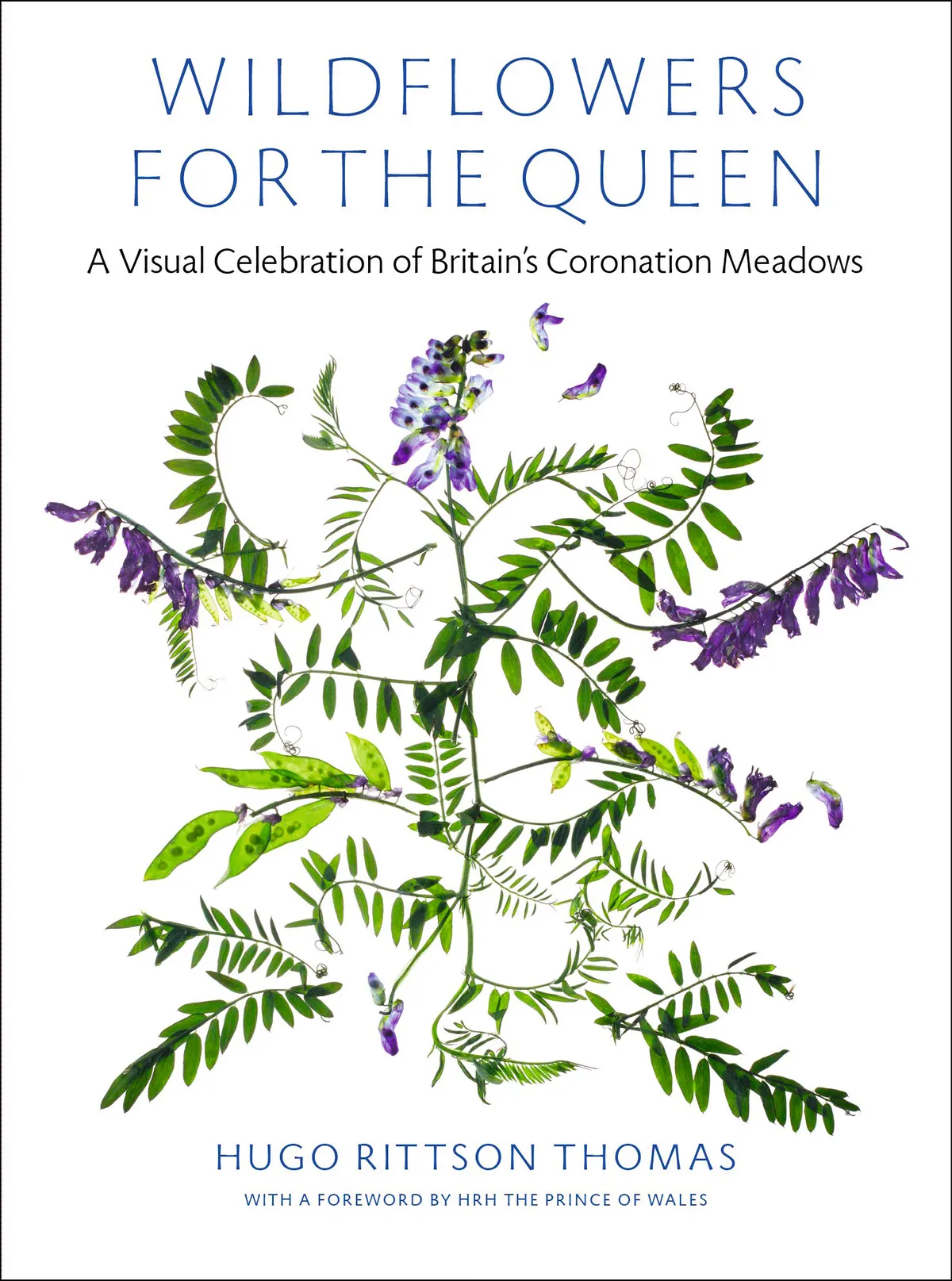
In 2012, the wild plant conservation charity Plantlife published Our Vanishing Flora, highlighting the loss of wildflowers from across Great Britain since 1953. The report showed that a staggering 97% of wildflower meadows have been lost since the 1930s, prompting Plantlife’s patron HRH The Prince of Wales to call for the urgent creation of new ones. The Coronation Meadows initiative was launched in 2013, with the aim of creating at least one new meadow in every county, using local, native seed from those small fragments of meadows and grasslands that still survive.
Hugo Rittson Thomas’s captivating book is a visual celebration of these meadows, and is very much a book of wildflowers for everyone. Pairing enigmatic photographic landscapes of 20 selected Coronation Meadows across the UK with zoomed-in flat lays and herbaria-like arrangements of key wildflower species – tufted vetch, field scabious, great burnet and a surprising number of exotic-looking orchids – it is a suitably rich and colourful homage to the vital diversity and beauty of the UK’s native grasslands.
Produced in partnership with Plantlife and punctuated by illuminating commentary from Dr Trevor Dines, Dan Pearson, Nicholas Coleridge, Miranda Brooks, Alan Titchmarsh and HRH The Prince of Wales among others, this sumptuous tome is a love letter to our native wildflowers but also a conservational clarion call. Preserve our wildflower meadows; protect their future.
Reviewed by Sonya Patel Ellis, botanical writer
Devon Wood: My Nature Journal
Jo Brown, Short Books, £14.99 (HB)
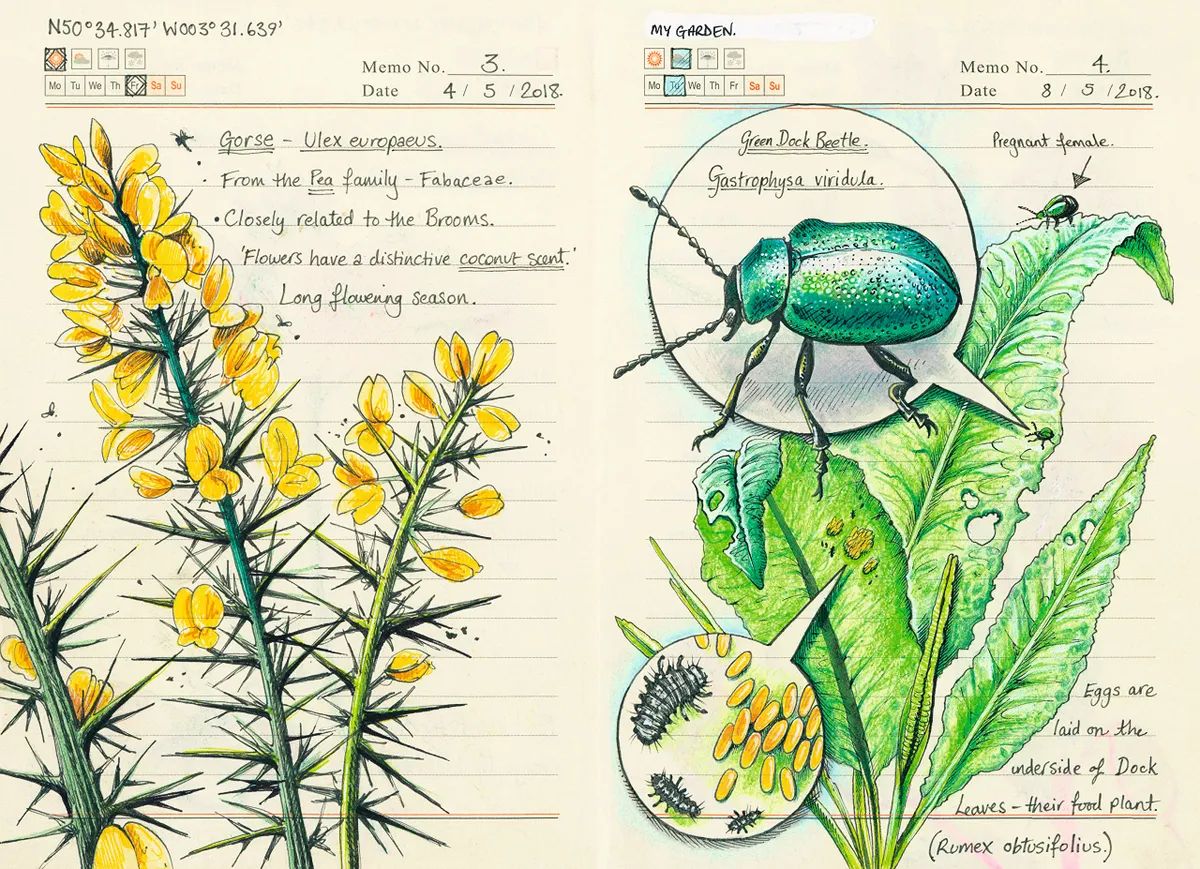
I actually gasped as I received this book. The cover is so beautiful – with stunning, hand-drawn botanical studies of birds, butterflies, beetles and plants – that alone would merit a five-star review. However, inside, every page also has lavish illustrations. For those nature-journallers out there, Jo Brown is the one you might want to aspire to. At the end of April 2019, Jo posted a video of her journal to date on Twitter – within two days she had 20,000 followers.
The pages are ruled, lending authenticity to the ‘notebook’ style. In addition, every page is hand-written, neat, clear and consistent.
The illustrations are made from Jo’s photos, and each entry is given its exact location. Number one starts on April 20, 2018 with horsetail, followed by a dazzle of pages that include gorse and green dock beetle (above). The final entry, number 89, dated 24 May 2019, is perhaps the most exciting of all: a yet-to-be-named parasitic fungi found on a bramble leaf, which is still being studied by mycologists at the time of the book’s completion.
At a time when many of us are finding solace in the natural world, this book captures precious moments of delight by the hand of someone whose close observation encourages us to see through her eyes. There are blank pages at the back for you to have a go, too.
Reviewed by Adele Nozedar, author and forager
Entangled Life: How Fungi Make Our Worlds, Change Our Minds and Shape Our Futures
Merlin Sheldrake, Bodley Head (£20)
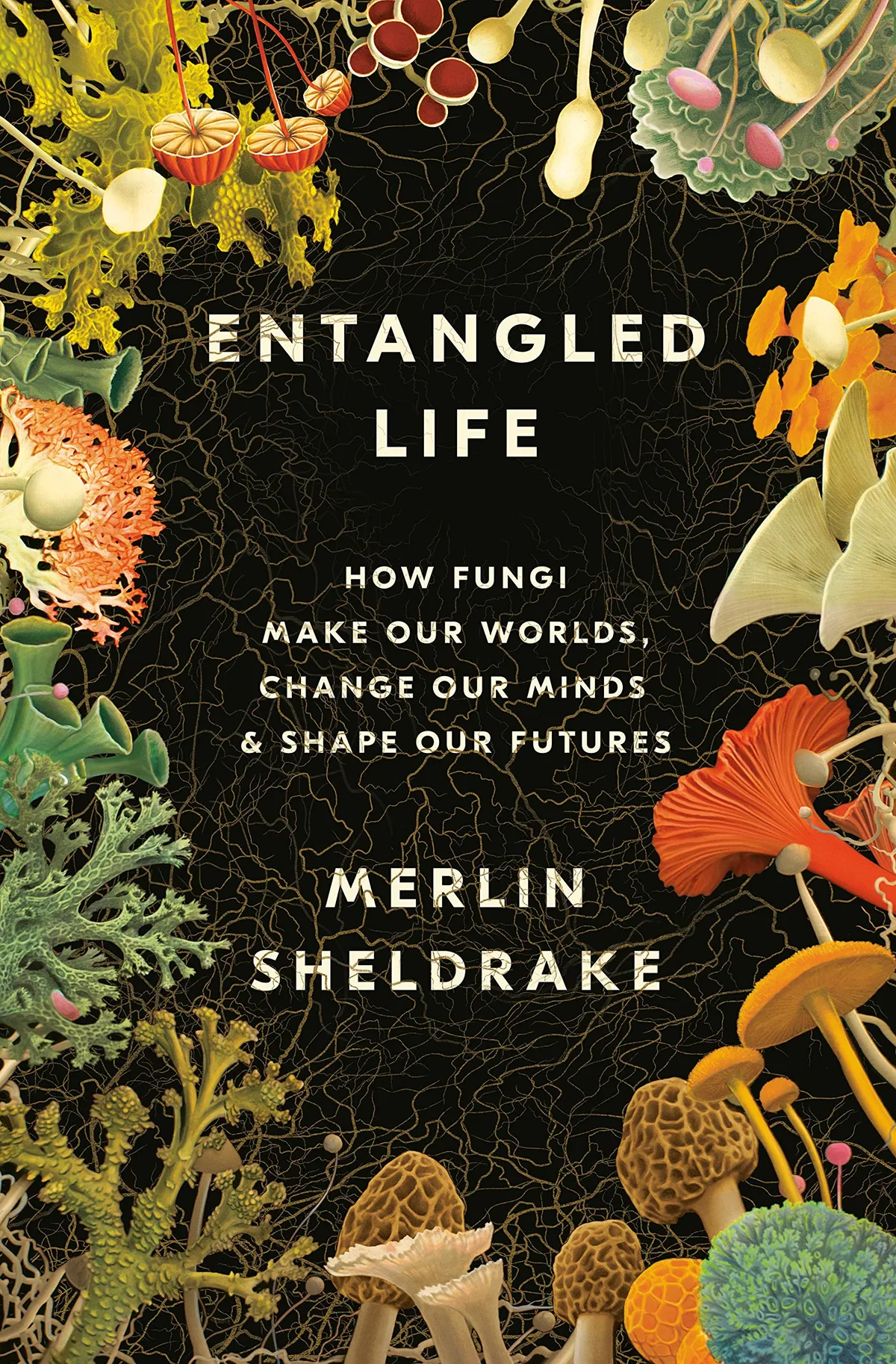
“Fungi are everywhere…” So begins mycologist Merlin Sheldrake’s deep dive into a world few of us know much about. Beautifully illustrated throughout (with mushroom-derived ink, naturally), Sheldrake’s tour de force provides fascinating insight into a kingdom, more than 90% of whose species have yet to be documented.
We’re introduced to entities that are intricate, surprising, sophisticated, adaptable, mystifying, virtually omnipresent and extraordinarily enduring (they’ve been around for over a billion years).
The author reveals just how much we owe to fungi. Highlights from a dizzyingly long list include making existence on land possible; influencing the weather; sustaining plants and defending them against disease; servicing just about every inch of our bodies; cleaning up oil spills; creating whole new ecosystems; and giving us alcohol and penicillin (and more drugs besides).
Sheldrake also raises the alarm about our reckless use of fungicides, which is producing superbugs that are far from benign. But these pages go well beyond mere biology. Sheldrake’s findings about fungi and their intimate interdependent relationships with human beings raise serious questions of the fundamental beliefs we have about ourselves. What actually is an individual? Are humans really independent? Are we as in control of our lives as we like to think?
Be warned: this is a life-changing book. Once you’ve read it, you can’t fail to see the world and your part in it in a new light. You may also start to wonder what exactly it is that makes you, you.
The Book of Trespass
Nick Hayes, Bloomsbury Circus, £20 (HB)
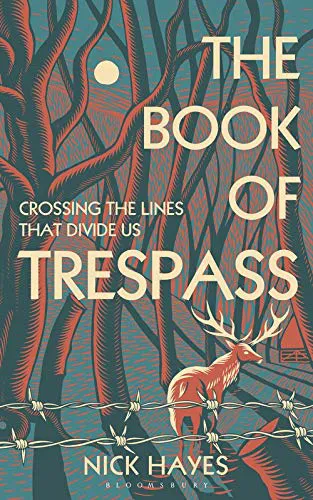
Nick Hayes tells a story of trespass that reveals deep truths about our society. This is a challenging book – it tackles lazy assumptions of race, class and the pre-ordained power of those with the luck to be born into land-owning. His digging into the origins of the vast acres from which we are excluded finds owners who have inherited the wealth, but not the shame, of slave-owners and land-clearers – yet have managed to spin that into an entitlement that tries to keep us from 90% of the land and 93% of the waterways.
English exceptionalism is an ugly hangover of Empire, when many of the walls that keep us out were built. But the exceptional quality of England revealed here is the iniquity of land distribution and access, and the ease with which many of us seem to accept this fragmentation of our history and our nature. We do not have to look very far before we see far more enlightened attitudes to access.
While politically radical and deeply insightful, this is not a dour book in any way. Hayes proves himself to be “brilliantly alive” – his forays across the imaginary lines that exclude us are described with a lightness of touch that brings humour into the darkest places.
This is one of the best and most important books I have read in a long time.
Reviewed by Hugh Warwick, author and ecologist
Vesper Flights
By Helen Macdonald, Jonathan Cape, £16.99 (HB)
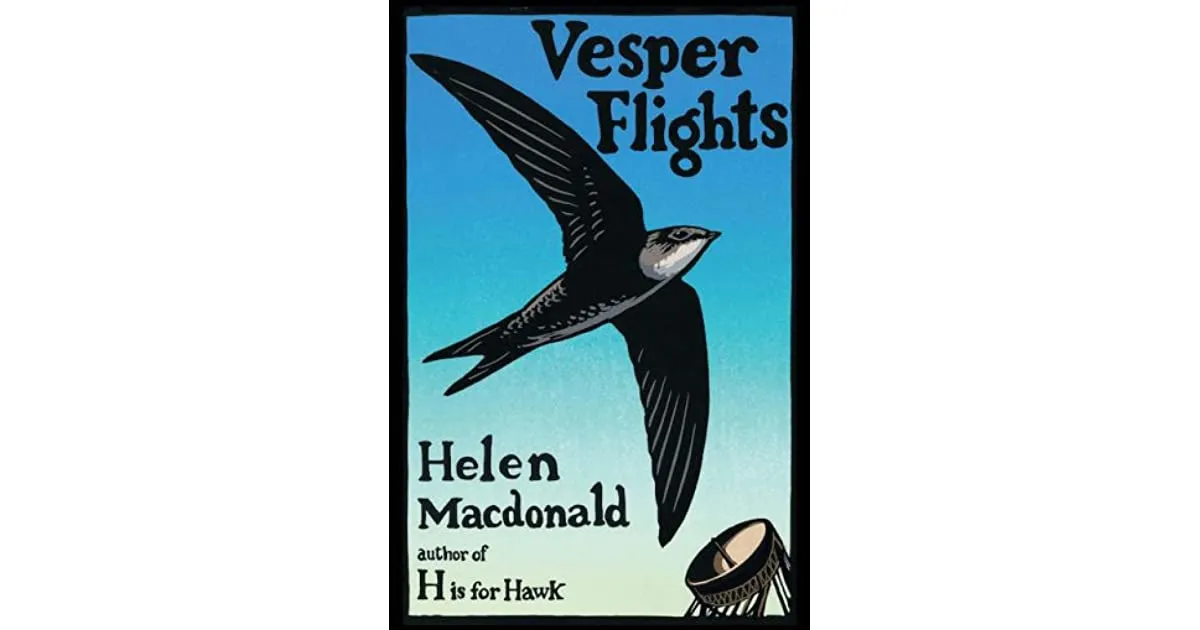
Six years ago, H Is for Hawk charged through the international bestseller lists and left its mark on nature writing with all the raw power of a goshawk in a forest. But instead of rushing out a follow-up, Helen Macdonald has since quietly focused on writing essays and features, often for the New Statesman or New Yorker. Forty are collected here, undated and without commentary, and they’re stunning.
If there’s a theme, it’s Macdonald’s love for the non-human world, and our complex relationship with other species and places. Her range is dizzying, however. Reminiscences from a rural Surrey childhood and thrilling encounters in the wild (glowworm nights, winter woods, swarms of flying ants) sit alongside explorations of cutting-edge science and trips overseas. Throughout, she makes unexpected connections: migraines and climate change, fungi forays and hunting.
Everywhere, phrases and ideas pull you up short. Paw prints in winter snow “can be read to rewind time”. Exploring our fascination with flocks of birds, Macdonald considers the plight of refugees: “In the face of fear, we are all starlings, a group, a flock, made of a million souls seeking safety.” There are unfashionable subjects too, such as a typically open-minded visit to a Staffordshire birdkeeper’s fair (a ‘working- class’ institution ignored by most nature writers), with all its cages of fancy finches. Heartfelt, thought-provoking, brilliant.
Reviewed by Ben Hoare, author and naturalist
Cottongrass Summer: Essays of a Naturalist Throughout the Year
Roy Dennis, Saraband, £9.99 (PB)
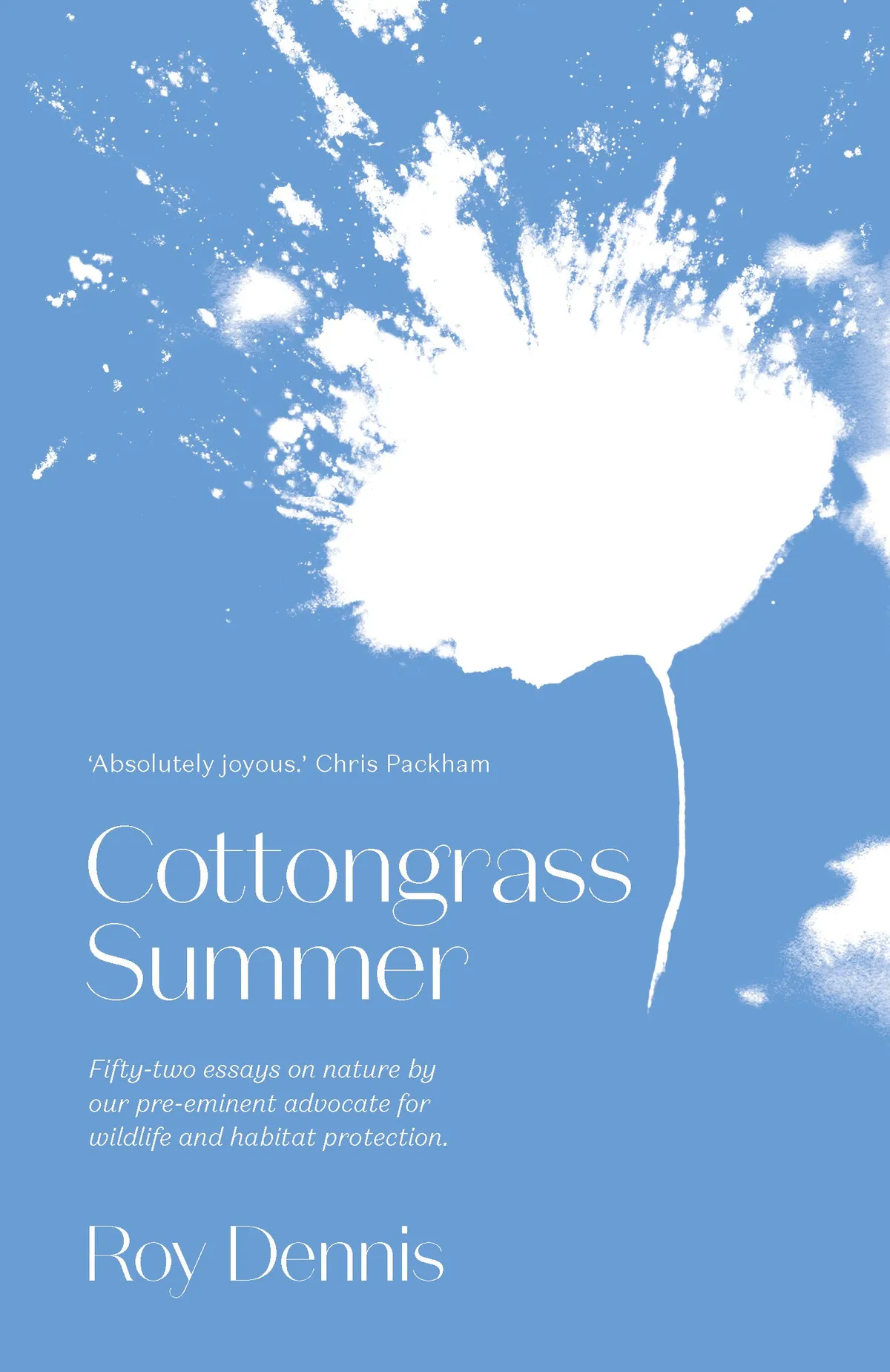
Cottongrass Summer won’t collect the headlines that a book by a celebrity natural history TV presenter might achieve, but I can’t think of a more important book that’s been written about British wildlife in the past 20 years.
That’s partly down to who the author is: Roy Dennis, the UK’s pre-eminent conservationist of the past half century. When he speaks, we all should listen. His musings on everything from why there ought to be more dead animals in our countryside to whether we should change the common name of the wildcat are all equally eagle-eyed.
But it’s also because he writes with such conviction, clarity, insight, depth and purpose. He understands better than anyone how times have changed. When talking about the “insect armageddon”, for example, he points out how raptor declines in the 1960s were found to be linked to the chemicals that were used in sheep dips and agriculture.
Today, we know that insects are also being impacted by a new suite of chemicals, and yet there is little change. Are our nature conservation bodies less able to affect change, he wonders; are politicians more negligent or big business more powerful? “We need immediate change rather than more research,” he writes. “Governments and big business love research; it means they don’t have to do anything now.”
In just a sentence or two, he cuts to the quick. The talons of his typewriter rip open the carcass, laying bare the truth of why British wildlife is in the state it is. If you read any book about the environment this year, read this.
Reviewed by James Fair, naturalist
The Swallow: A Biography
Stephen Moss, Square Peg, £12.99 (HB)

I took issue with this, the latest book from the prolific Stephen Moss, right from the start. He declares, with the intent I presume to generate just the reaction it got from me, that the swallow is the best-loved bird in the world. Surely that is the robin (the subject of another of his books)? If you accept the challenge, you will find yourself swiftly and confidently drawn into this avian world.
As one would expect from Stephen Moss, this is a book backed with a lifetime of experience and reading – all managed into a seamless sequence of stories. This could be a conversation with an extremely well-read eccentric in the pub – and what a wonderful experience that would be. Inevitably, there is a reminder of the reality of life on earth. A single brood of baby swallows needs to eat 150,000 individual insects before fledging; this requires the adult birds to catch 500 every single hour! So the loss of flying insects from our world is going to have a serious impact on the ability of the swallow to thrive.
Swallows are clearly amazing and I do thrill at their arrival and mourn their departure each year. To ensure this amazing bird continues to return as the harbinger of summer, Moss gives us a timely reminder that we need to share our land – we need to turn away from destruction and embrace a more ecocentric worldview.
Reviewed by Hugh Warwick, ecologist and author
The Lost Spells
Robert Macfarlane and Jackie Morris, Hamish Hamilton, £14.99 (HB)
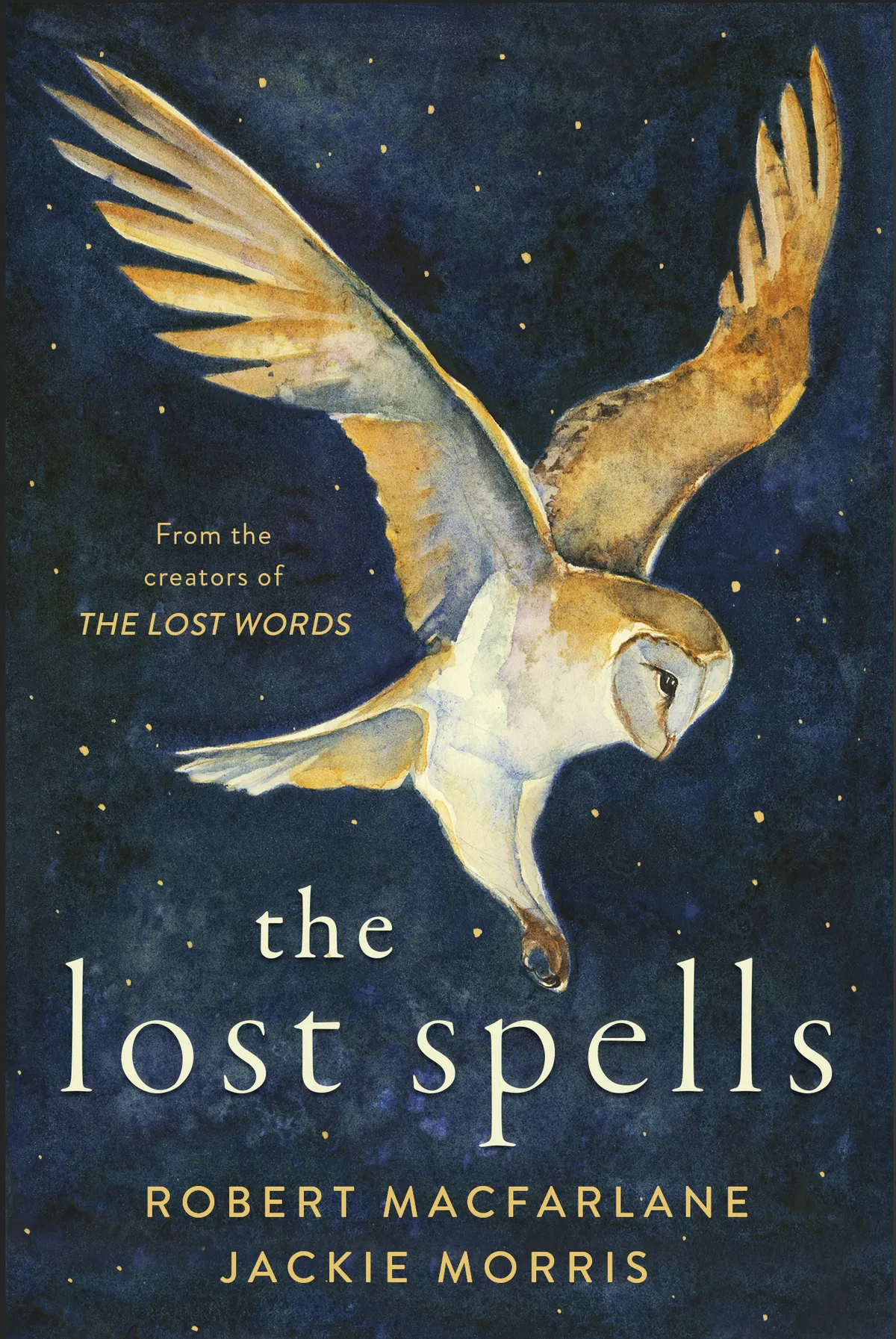
With its enormous gilded pages and accurate yet fantastical artwork of Britain’s wild plants and creatures, 2017’s The Lost Words had something of a medieval bestiary about it. The enchanting mash-up of poetry and awe at the natural world was a book to pore over, read aloud and treasure.
Three years later, artist Jackie Morris and nature-writer-academic-campaigner Robert Macfarlane are back. The Lost Spells shares all its forerunner’s winning qualities, except size: this book is dinky by comparison, and considerably longer. (Perhaps bookshops, libraries and schools had quietly suggested a smaller volume might be more manageable for shelves and little hands, and easier to reissue as a paperback?)
There are swifts and silver birch, barn owls (pictured) and seals, oaks and thrift and mountain hares. Each poem casts
its spell over up to eight linked spreads. Morris’ glorious paintings often scamper, splash and soar across a full double page, and Macfarlane again delights in irresistible wordplay. A great spotted woodpecker and badger engage in tit-for-tat banter, while swifts shred the sky in hooligan gangs: “those handbrake-turners, those wheelie-pullers, those firers-up of the afterburners…”
In places, The Lost Spells is explicit about threats to the natural world, and here too is ‘Heartwood’, Macfarlane’s protest poem against the pointless felling of street trees. As the prologue says: “Loss is the tune of our age, hard to miss and hard to bear.”
Reviewed by Ben Hoare, author and naturalist
The Wild Silence
Raynor Winn, Penguin Books, £14.99 (HB)
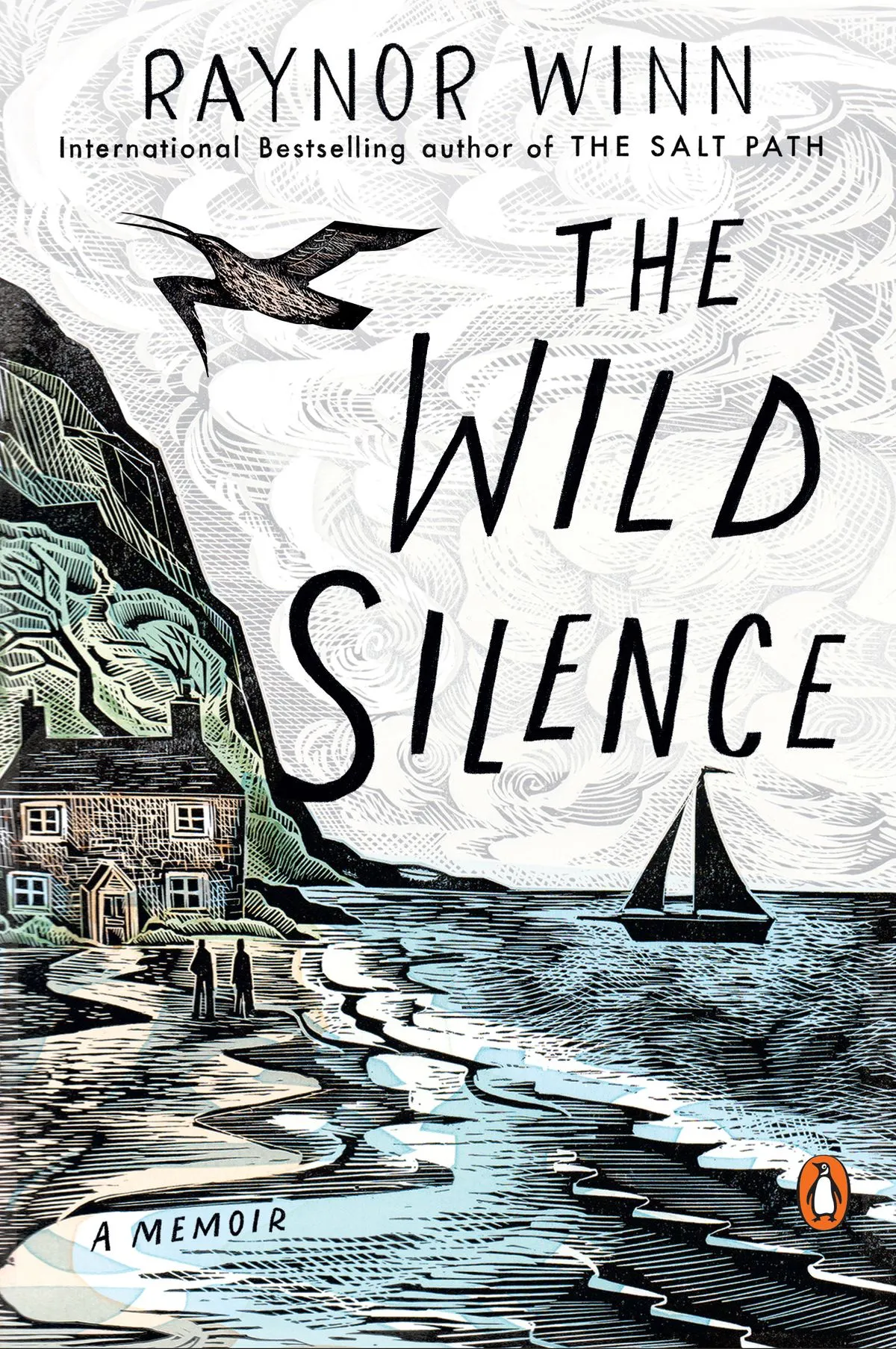
How could there be a follow-up? The Salt Path, published in 2018, was the radiant, soaring, heartstring- tugging story of what Winn and her husband Moth, who has an incurable illness, had been told would be their final journey together – an arduous trek along the South West Coast Path when they had nothing more to lose. Sometimes life has other ideas. The Wild Silence sees the couple ensconced in a Cornish village. Moth is still unwell but determinedly studying for a degree, while Winn, feeling lost, trusting no one and plagued with self-doubt, finally discovers her gift as a writer. Then an amazing new opportunity comes their way.
Moving back and forth in time, Winn reveals the unexpected way her smash- hit debut came to be published, while revisiting her nature-filled childhood in a tenanted estate cottage on a farm. She recalls how she met and married her college sweetheart, and takes us on their many carefree wild-camping adventures around Britain. Winn’s soul-baring honesty and beautifully remembered, touching conversations will take your breath away.
Ultimately, this gorgeous book is about love – for a person (“my wild unity”) and for the land (“the deep humming background to my very being”) – and hope. Faced with Moth slipping away “like the sea mist in the heat of the sun”, Winn refuses to give up on him.
Reviewed by Ben Hoare, author and naturalist
The Unremembered Places: Exploring Scotland's Wild Histories
Patrick Baker, Birlinn, £14.99 (HB)
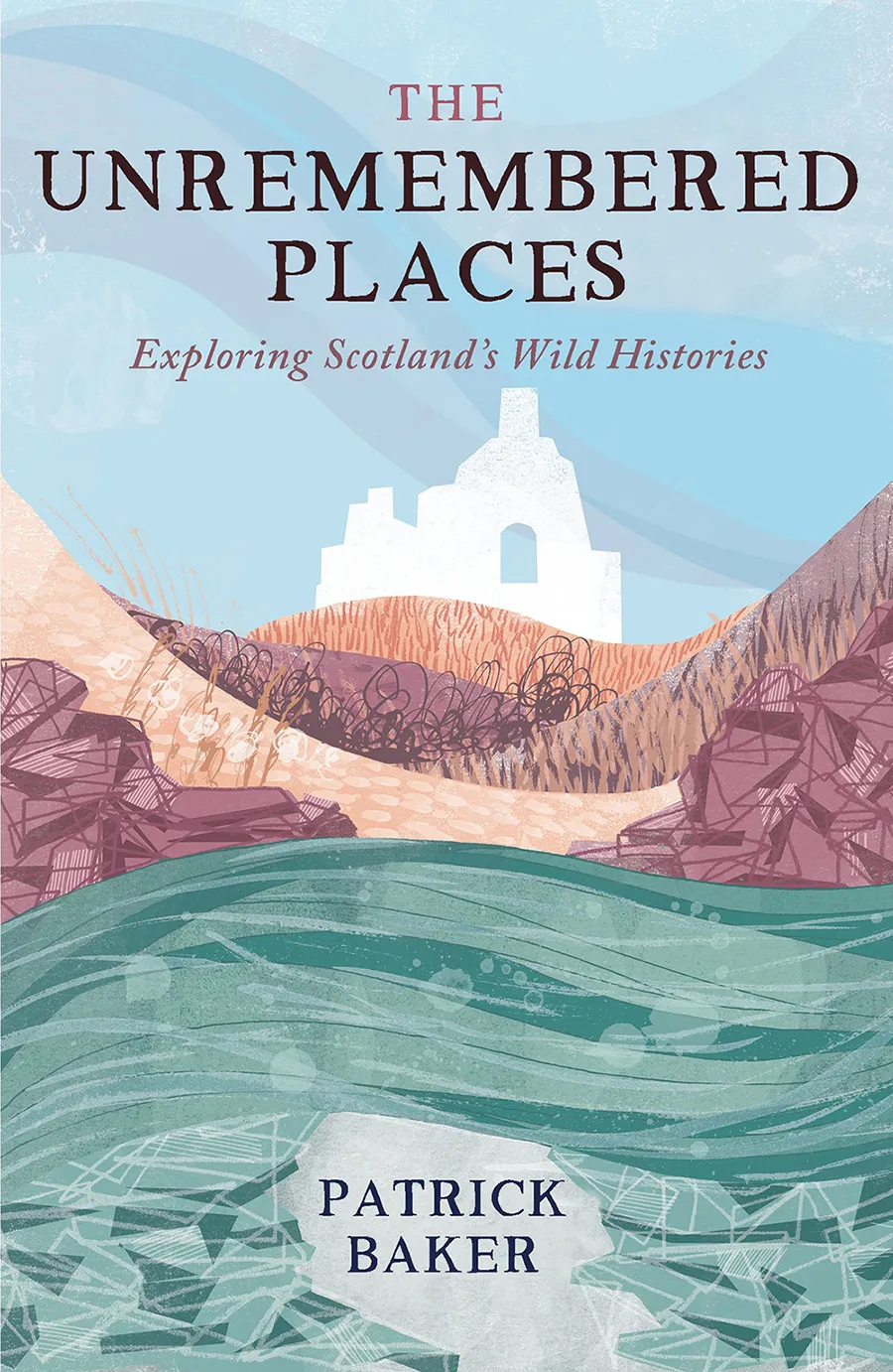
There is a common lament that the countryside is being concreted over, with all sense of wildness lost. But it is not true for much of Britain, and it is especially not true of Scotland. Patrick Baker’s series of grippingly told walks and canoe voyages to lonely and unvisited islands, glens, moors and caves reveals lost industries, empty settlements and human retreat.
He finds silence – or nature’s return – in places that once thronged with drovers, miners or crofters, and tells poignant tales of long-lost lives. A navvies’ graveyard near the remote dam they built; illegal stills hidden in the wilds; abandoned mines on the Slate Isles; caves that hid Jacobin fugitives, now known only through rumour. Though Baker weaves the known history around his present adventures, each of his journeys fills with atmosphere and emotion.
“I had come to think that wild histories seemed somehow indefinably linked with the spirit of a place,” he says. And it is only by seeking and experiencing these places first-hand can we “interpret the complex interactions of past lives within a certain space”. It’s thoughts like these that can turn any walk into a more memorable, meaningful adventure.
Reviewed by Fergus Collins
SQUIRREL_13111513
In Praise of Walking: A New Scientific Exploration
Shane O' Mara, Bodley Head, £8.99 (PB)
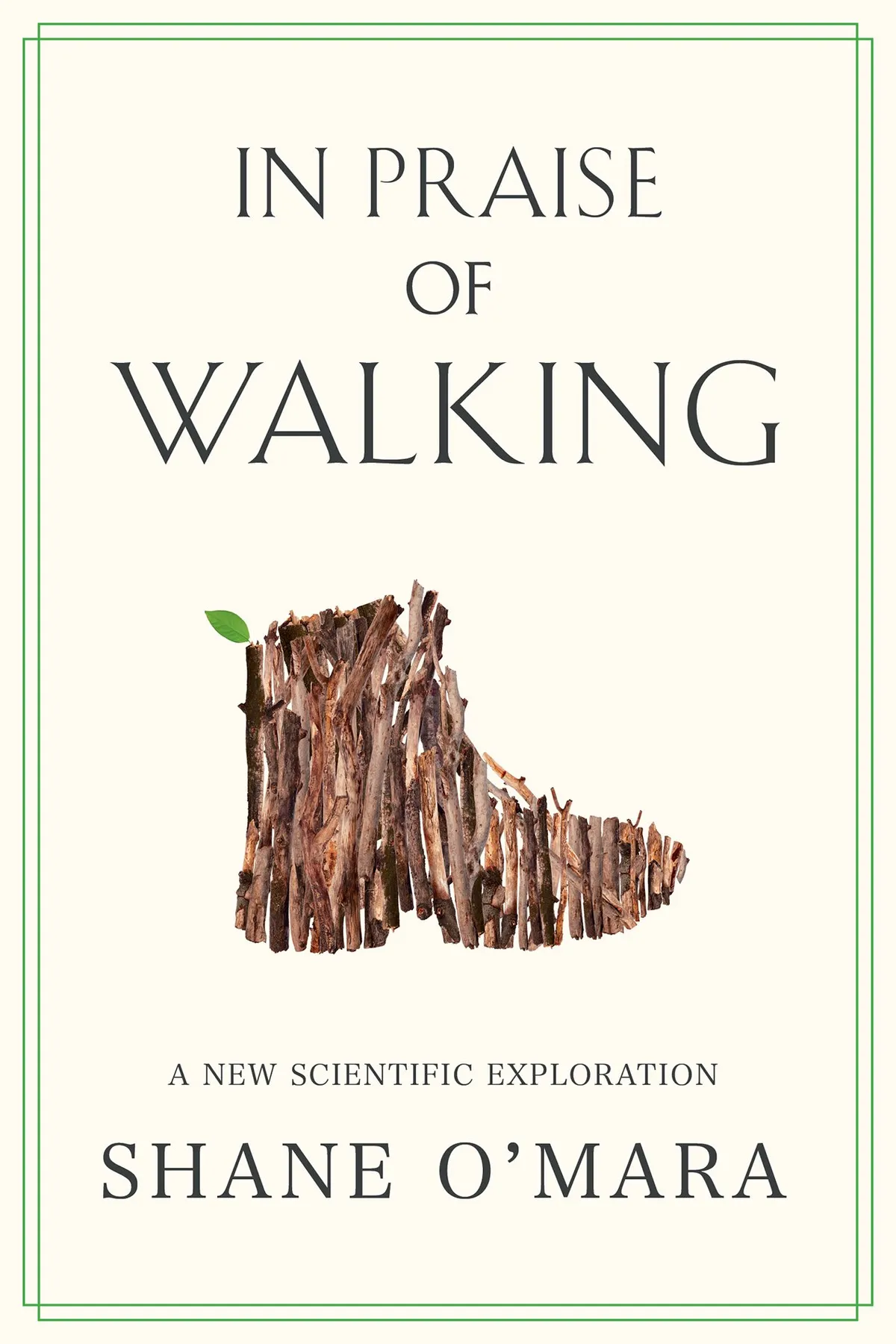
This illuminating book proves a worthy addition to a crowded genre as it focuses on the science behind what enables us to walk and why walking is, in turn, good for us. In the introduction, Shane O’Mara outlines the intriguing and novel concept that, along with language and using tools, our ability to ambulate is one of the key things that sets humans apart from other animals.
Initially, the book looks to our collective history as a species and to our individual past as children to explore how we evolved the skills to walk and in turn to navigate. A more extensive perspective takes shape as it investigates differing reasons for walking, such as to aid thought and to protest. It also examines how certain environments impact upon the brain and wellbeing, including a fascinating chapter on walking in the city, of which city planners may wish to take note.
O’Mara is a professor of brain research, so it comes as little surprise that the main focus is on the role the brain has to play when it comes to walking. What does come as a surprise is how clear and understandable the theory is, even for a layperson. This is in no small part due to O’Mara’s confident and deft handling of his topic.
Sections on the sociological aspects of walking as well as entertaining anecdotes peppered throughout the more theory-rich chapters also provide interest for those readers with a less scientific mind.
Reviewed by Christopher Ridout, outdoor writer
Spirit of Place: Artists, Writers and the British Landscape
By Susan Owens, Thames and Hudson, £25 (HB)

“A medieval landscape without a human figure is a rare thing indeed,” writes Susan Owens, who deftly charts the progression of the British landscape from background to centre stage. Her journey weaves in the work of early monks such as Bede, familiar protagonists including Constable, and contemporaries such as Bettina Furnée – artists and writers whose landscapes have inspired devotion, fear, nostalgia, solace, contemplation, learning and enchantment. The result is this gorgeously illustrated scholarly tome that can be enjoyed and referred to again and again.
That Owens has done so with such erudite alacrity reveals her skill as art historian and curator. “Come with me,” she suggests, “imagine”. Her warm witty prose brings poems, paintings and their creators to life. Familiar works such as Coleridge’s The Lime Tree Bower My Prison take on new significance when you discover that his incarceration was caused by an accident with scalding milk. Richard Long’s Line Made By Walking has more context when you learn it was made between hitchhikes.
Reviewed by Julie Brominicks, nature writer
Imperial Mud: the Fight for the Fens
by James Boyce, Icon Books, £12.99 (HB)
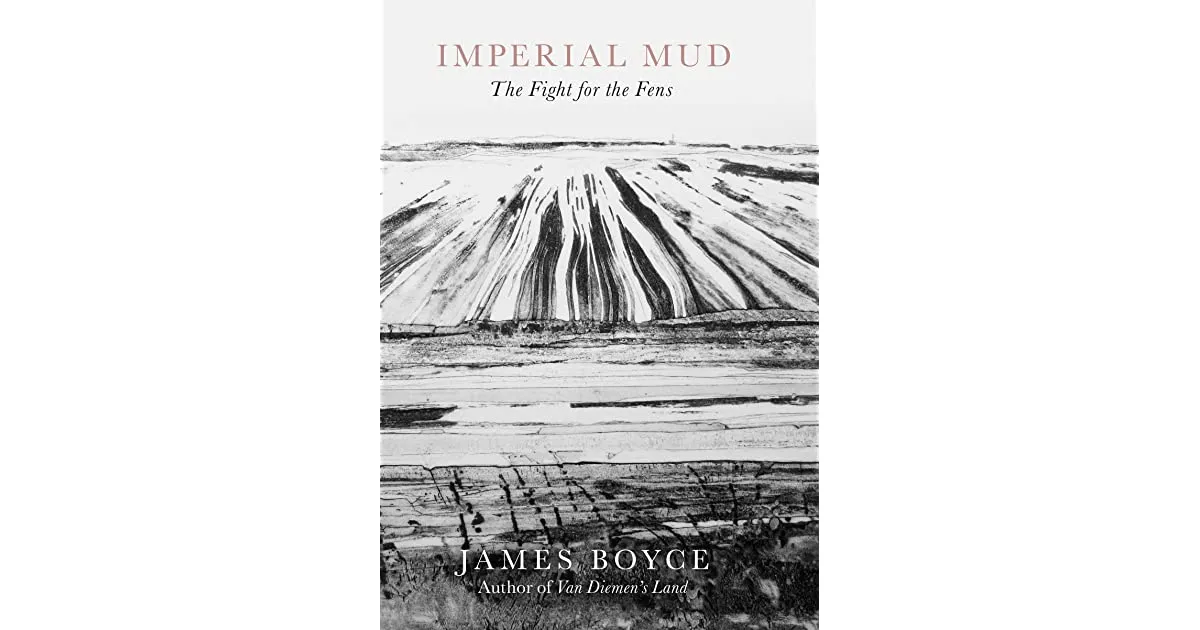
Don’t be put off by the somewhat uninspiring title, for this is a real page-turner. An award-winning Australian historian, James Boyce tells the little-known story of the almost-continual guerrilla warfare fought by the Fennish (his own neologism for the Fens’ inhabitants) against those who would destroy them and their home territory. The list of adversaries is daunting: Romans, Saxons, Tudors, Cromwell’s Commonwealth and pretty much every parliament thereafter.
Several chapters are devoted to a surprisingly gripping account of the ‘enclosure’ of the Fens over the centuries, when vast areas of common land in the east of England were taken by force from those who lived on it, leaving huge numbers homeless, destitute or both and wiping out a very distinct culture and way of life.
This is also the tale of a slow-motion ecological disaster. The draining of the Fens to make them ‘more productive’ transformed a peat-rich landscape that had been teeming in flora and fauna into a vast sinking desert of ever-depleting farmland.
Despite all this, Boyce refuses to be defeatist. He praises conservation and restoration initiatives, and stresses the value of fighting against oppression, even if it succeeds only as a delaying tactic. His account of the gradual obliteration of the Fens and the Fennish also stands as a warning about what happens when the rich and powerful dress up their avarice as ‘progress’ – a lesson we could do with learning today.
Red Sixty Seven
British Trust for Ornithology, £19.99 (HB)
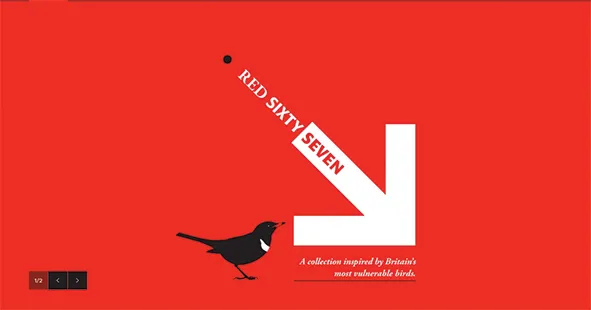
A striking red cover with a ring ouzel (“the thinking person’s blackbird”) in the corner hints at the contents of this well-presented book. An eclectic mix of 67 writers and an equal number of artists offer personal insight – via poetry and polemics – coupled with interpretive artwork, on 67 ‘red-listed’ birds of conservation concern. These range from white-fronted geese to corn buntings, ducks, raptors and warblers, with content featuring a heady mix of data, art and anecdote in a book curated by Kit Jewitt – a “birder and part-time conservationist”.
Published by the science-informed British Trust for Ornithology, these “love letters to our most vulnerable species [of birds]”, with remarkable original artwork, are a creative way to fundraise and boost the profile of endangered wildlife.
There is plenty to stimulate the reader, though some of the writing comes across as ‘ad hoc’ and at times ill-informed (YouTube is one person’s experience of the bird). Some additional information could have better enlightened readers on the causes of each bird’s decline and where solutions might lie.
Was this a missed opportunity to hear from more conservation experts – such as farmers, wardens, foresters and land managers – who champion lapwing, grey partridge, skylark and black grouse among others?
In an age of eco-anxiety, the book is an original awareness-raising project, but it could have reached out to a wider ‘thinking’ audience by promoting more collaborative conservation work.
Reviewed by Rob Yorke, rural commentator
SQUIRREL_13085994
I Am an Island
By Tamsin Calidas, Transworld, £16.99 (HB)
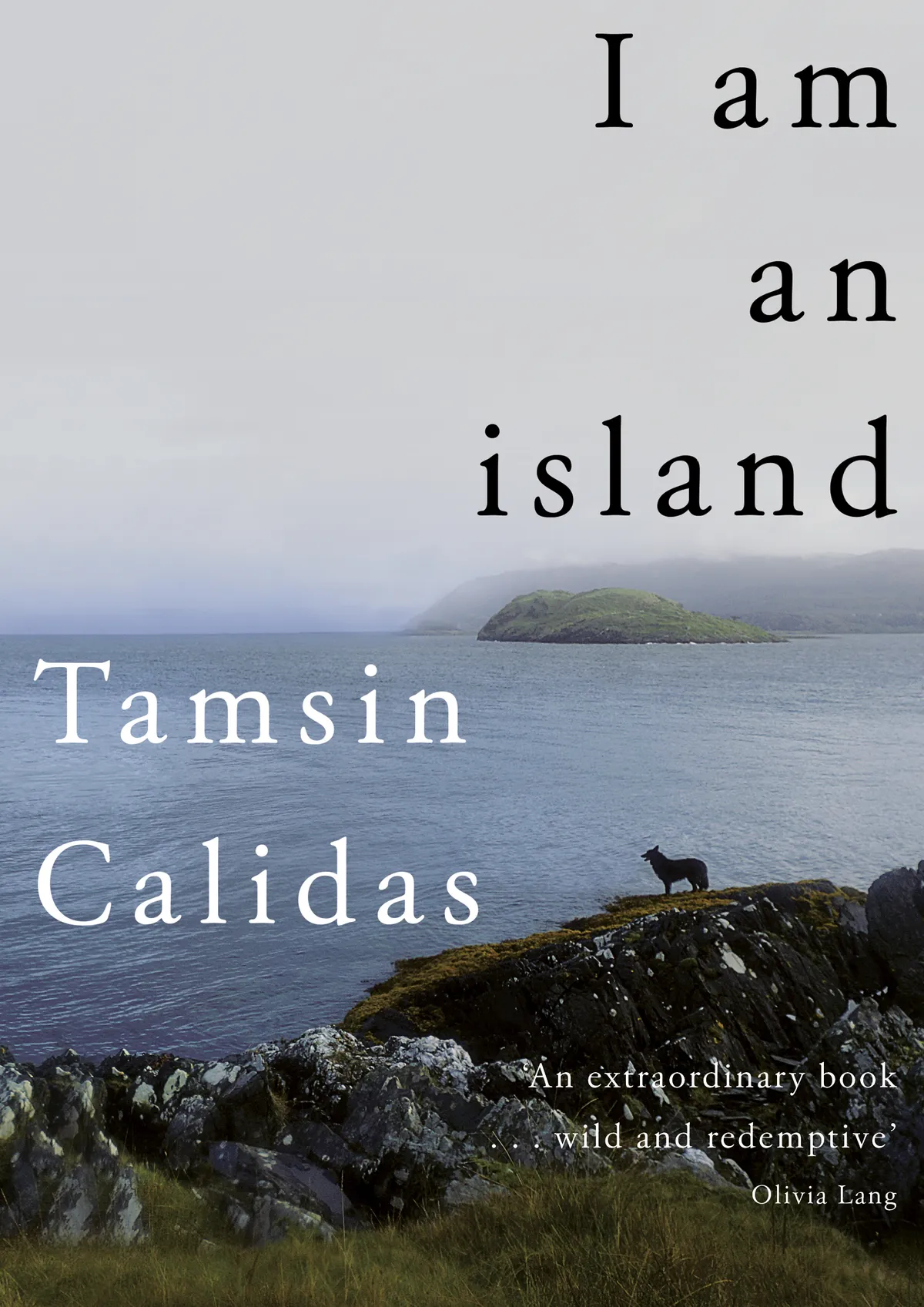
This account of one woman’s journey from trauma to tranquillity on the unnamed Hebridean island to which she fled after an imperilled London existence is one heck of a ride. If escape-to-the-country books about scones and mischievous goats are your thing, then this is not for you. Amusing anecdotes and community spirit are noticeable in their absence (I wondered, for example, whether anyone had taught Calidas animal husbandry).
Instead, alcoholism, misogyny, racism, jealousy and ostracisation provide context to the author’s equally harrowing personal circumstances. There is graffiti. There are drunk neighbours almost crashing a tractor into the croft, broken wrists, suspicions regarding her ram’s death and the colleague who asks Tamsin if she wasn’t ashamed to be seen with her father “because he is a darkie”.
Brutality is gripping. Only when Calidas eventually finds peace in nature does the book lose its rhythm – though here, wildlife and landscape (the “gull-wracked rocks where the seals are slipping in and out of the deeper water”) are powerfully observed.
Spanning nearly two decades, this memoir is already recent history as the island cautiously admits incomers and ideas. Nevertheless, if you labour under a rosy illusion of rural idyll, then maybe read this after all. If recent months have taught us anything, it’s that both community spirit and pernicious prejudice can thrive in the city and countryside alike. Calidas shows us that to tackle this truth, you first need the courage to face it.
Reviewer, Julie Brominicks, nature writer
The England Coast Path
Stephen Neale, Bloomsbury, £18.99 (PB)

The passion Stephen Neale has for the English coast comes across loud and clear in this beautifully presented guidebook. The author worked with Natural England to assess the Essex section of the England Coast Path – what will be the longest managed and waymarked coastal path in the world once completed – but he clearly has an in-depth knowledge of the coast in its entirety. The book’s cover promises “1,000 mini adventures” and it’s safe to say it delivers.
The pages are packed with attractive photographs, while the easy-to-follow information – presented in a lively and engaging way – is well set out with colour-coded symbols indicating coast, woodland, wildlife, heritage, dark-sky sites, accommodation and food.
Part one tells the stories of the England Coast Path heroes – those who have worked tirelessly to realise what, at times, must have felt like an impossible ambition. He goes on to outline his ‘best of’ coastal experiences: everything from swimming, snorkelling, camping and canoeing to foraging and fossil hunting. Part two divides the coast into 23 sections, with enticing suggestions for exploration: hug an oak, follow fulmars on thermals, catch crabs, visit a stone circle or watch seals.
This is a guidebook you can dip in and out of while at home, but it will also be an indispensable guide for when we’re able to explore England’s wonderfully diverse coast again. What struck me is that no matter how well we think we know the English coast, there’s always so much more to discover.
Reviewed by Helen Moat, travel writer
SQUIRREL_13111514
Short Runs in Beautiful Places
Jen and Sim Benson, National Trust Books, £12.99 (PB)
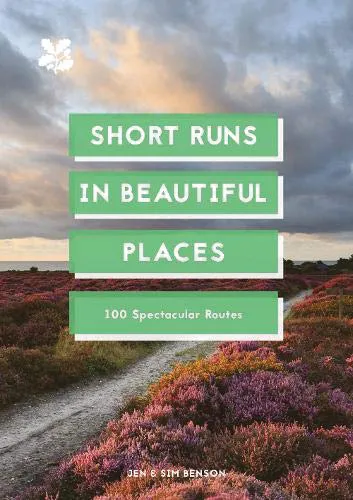
If you’re new to running and keen to explore more beautiful places in the British countryside once restrictions are lifted, then this is the book for you. From the tip of Cornwall to the Scottish Highlands, this attractive guidebook by Jen and Sim Benson features 100 easy-to-follow off-road running routes on National Trust-managed bridleways and footpaths along the coast, through wooded valleys and beyond.
The great appeal of this book is that it encourages you not just to run, but to enjoy a day out exploring somewhere new, which makes it ideal for families, because many of the paths can be run with a running buggy or with a young child accompanying on a bike. Each run can also be walked and they’re easily accessible by car or public transport.
If you fancy testing your fitness in a social capacity, the National Trust also works with Sport England to host a weekly 5k Parkrun at many of its sites. Parkrun is free to enter and many of the runs included in this book follow Parkrun routes, such as Killerton House parkland. parkrun.org.uk
Reviewed by Carys Matthews
Best nature books for plant lovers
Britain’s Trees
Jo Woolf, National Trust Books, £12.99 (HB)

This is a book that delves into the facts, fiction, myths and folklore of trees, with stories that introduce us to the fascinating natural history of many species growing in the British landscape, not all native, but all with a tale to be told. The trees will be familiar to many, but the histories surrounding them may not.
I was intrigued by stories of our two native oaks, revered by the druids, their strong timber used in the construction of houses and ships. Oaks are home to more fauna than any other British tree – an estimated 500 species of invertebrates.
The author explains how certain species are used as foods and as remedies for a multitude of ailments, aches and pains. Festivals including ‘wassailing’, ‘maypole dancing’ and ‘beating of the bounds’ all involve our arboreal friends, too. As well as having links with mischievous fairies, some trees are associated with witches, and on occasion the trees themselves are used to protect our houses, livestock and crops from magic.
Tree-related superstitions, such as ‘touch wood’ are fascinating; many still utter these words when hoping for a good outcome. I enjoyed the stories of well-known individual trees, such as the Birnam Oak, and the woodland mentioned in Shakespeare’s Macbeth.
This is a good book to read about a few trees at a time, as each species is featured in nice bite-size chunks. The author has done a great job of bringing their heritage (fact and fiction), into a book that will broaden our knowledge of the magnificent trees that surround us.
Reviewed by Tony Hall, arboretum manager at Royal Botanic Gardens, Kew
Orchid Summer
Jon Dunn, Bloomsbury, £20

Orchids are the most beguiling plants in our flora. Some use sexual deception to lure pollinators, others forge underground partnerships with fungi and many have a tantalising tendency to appear in profusion in one year and vanish the next. By his own admission, Jon Dunn has fallen under their spell, with a bad case of orchid fever. It’s a compulsion that led him to leave his home in Shetland and spend a summer seeking every species in Britain, from the early purples of spring to the last of the autumn lady’s tresses.
Travelling with him is pure delight. Dunn is a fine nature writer, whose descriptions of locations are eloquent and often poignant, as so many orchid habitats are at risk. He is an erudite authority on orchid identification, while his digressions into their uses as aphrodisiacs, their promiscuous tendency to form hybrids that bamboozle botanists, and tales of their curious place in human affairs are constantly entertaining. Who knew that a helleborine chemical compound that stupefies pollinating wasps was administered to Hitler by his physician?
Orchids are the stars here but the orchid enthusiasts we meet – such as novelist John Fowles, Queen Victoria’s orchid grower and a professor suspected of transplanting rare species so as to claim kudos for their discovery in unlikely places – provide telling insights into human nature and the grip these charismatic flowers can maintain on the minds of botanists.
Reviewed by Phil Gates, freelance writer
Chasing the Ghost: My Search for All the Wildflowers of Britain
Peter Marren, square peg, £20
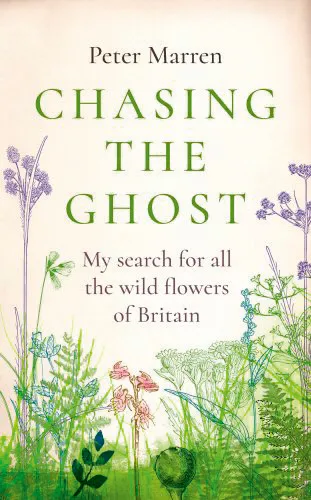
Peter Marren is way ahead of most of us in the wildflower-spotting game, and here he sets out to find the 50 species that he hasn’t yet ticked off from his tattered copy of Rev W Keble Martin’s The Concise British Flora.
Counting down from number 50 (the Radnor lily), Marren takes us on a briskly sparkling journey throughout the length and breadth of Britain. The star of the show is the ghost orchid (Epigogium aphyllum, pictured above) famously elusive and a symbol of changing times and, possibly, values. Notoriously tricky, a will ‘o the wisp of a plant, on and off the ‘extinct’ status for the past few years. Does he find it? There’s only one way to find out...
Reviewed by Adele Nozedar, author and forager
Best wildlife books
The Secret Life of the Cairngorms
Andy Howard, Sandstone Press, £24.99 (HB)

Few parts of the country can lay claim to be bona fide wildernesses, but the Cairngorms are the real McCoy. This massive granite massif, with its hulking whaleback mountains, snowbound corries, ancient Caledonian pine forest and sparkling salmon rivers, is home to some of our most exciting wildlife, from pine martens to red deer and ospreys.
A safari here is the closest Britain has to a wilderness. So, perhaps unsurprisingly, the area also supports a thriving ecosystem of professional wildlife photographers, including local lad Andy Howard.
The Secret Life of the Cairngorms is Andy’s second book, following one on mountain hares (also stunning). That volume took seven years to complete. This is another triumph of spectacular images, mostly birds and mammals, taken in all weathers. You sense that Andy doesn’t do things by halves, lugging heavy camera gear up Munros and sleeping under the stars to watch the mountains and valleys reveal themselves at dawn.
Highlights include red squirrels in every season, hard-as-nails snow buntings sheltering at the summit of Ben Macdui, Scotland’s only free-ranging reindeer herd and all four British grouse – the heather- loving red, jousting black, colour-changing ptarmigan and turkey-like capercaillie.
Andy writes well, so longer captions would have been welcome. I’d also have liked to see more of the smaller creatures. But this is a stunning celebration of a savage yet beautiful landscape.
Reviewed by Ben Hoare, naturalist
A Honeybee Heart Has Five Openings
Helen Jukes, Scribner, £14.99 hardback
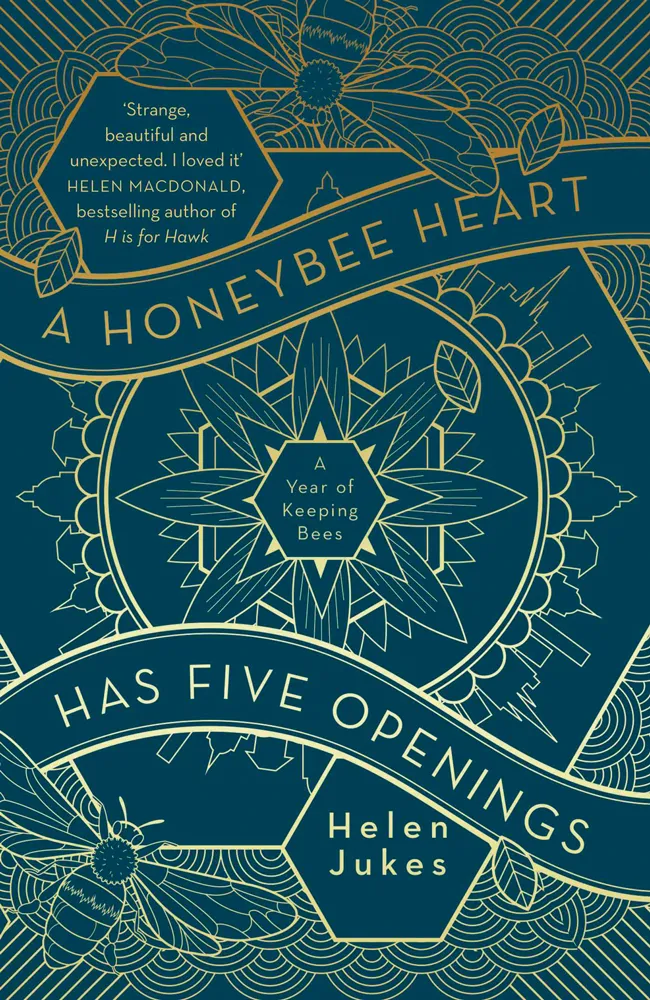
With a house that is not yet a home and a new job full of stress, Helen acquires as a gift, a swarm of bees, and subsequently learns how to keep them. What she finds – about bees, hives, ecology and beekeeping – is clearly presented and, due to being integrated into her own life story, easily digested. This is classic modern nature-writing; a synthesis of scientific learning, observation and the author’s response.
Reviewed by Julie Brominicks, outdoors writer
The Twelve Birds of Christmas
By Stephen Moss, Square Peg, £12.99
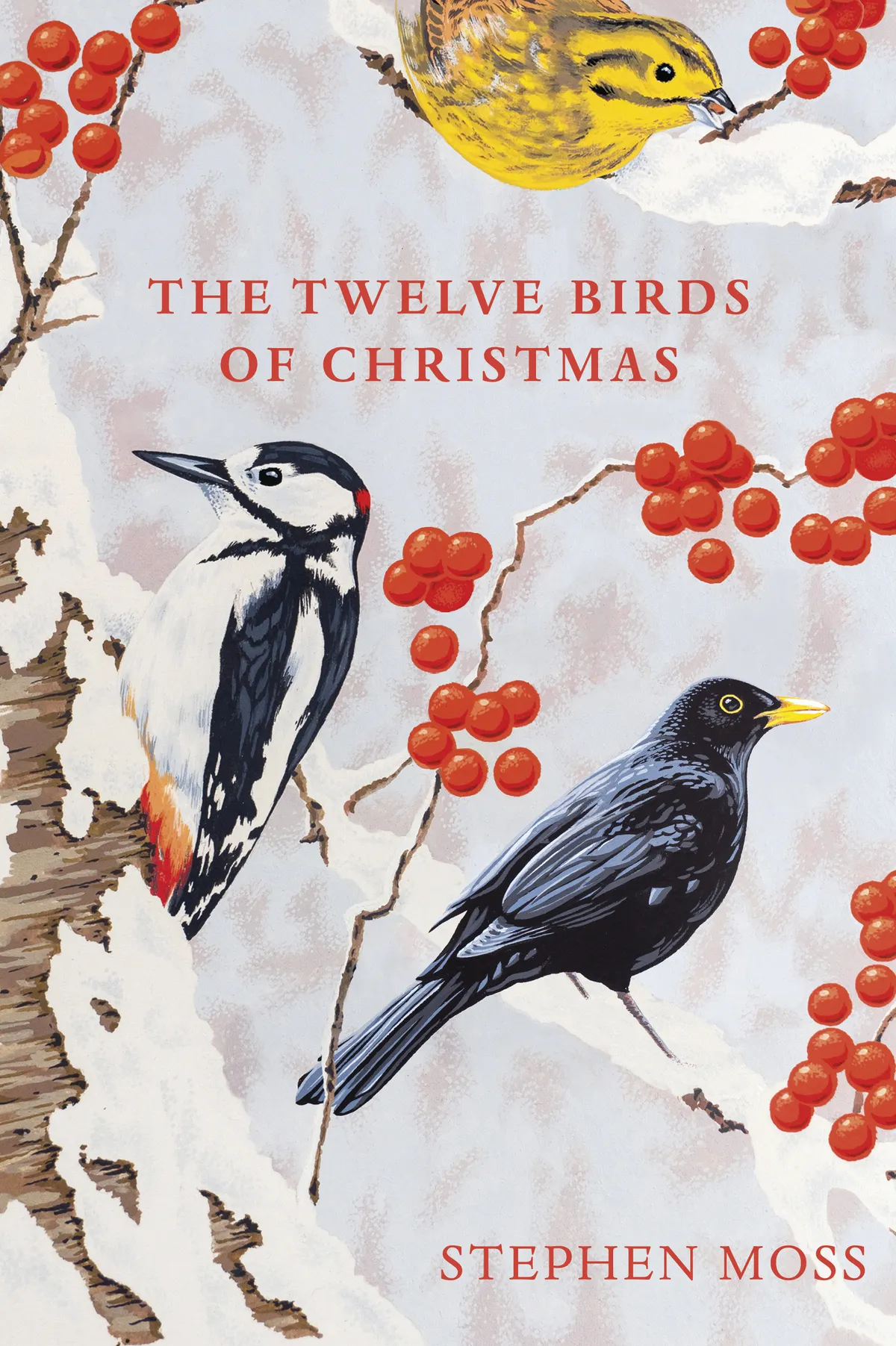
This avian interpretation of our best-known carol is an ideal stocking filler for the bird-lover. From the partridge to woodpeckers (the “12 drummers drumming”), naturalist Stephen Moss traces the fortunes of each British species, weaving in compelling folklore, history and bird behaviour.
Reviewed by Margaret Bartlett, production editor of BBC Countryfile Magazine
SQUIRREL_13086666
The Hedgehog Handbook
Sally Coulthard, Head of Zeus, £9.99
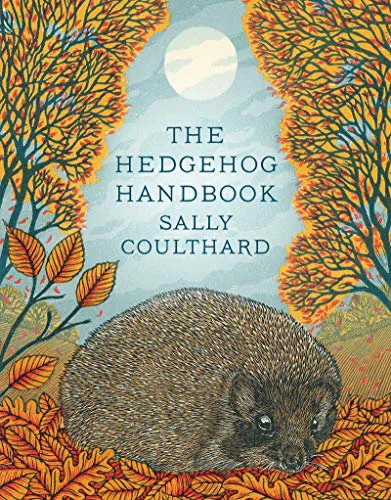
Shy and endearing, the hedgehog is one of our most-loved creatures. This book takes you through a year in a hedgehog’s life, its habits and biology, and includes month-by-month advice on how to help it thrive in your neighbourhood.
Reviewed by Margaret Bartlett
Wintering
Stephen Rutt, Elliot & Thompson, £12.99
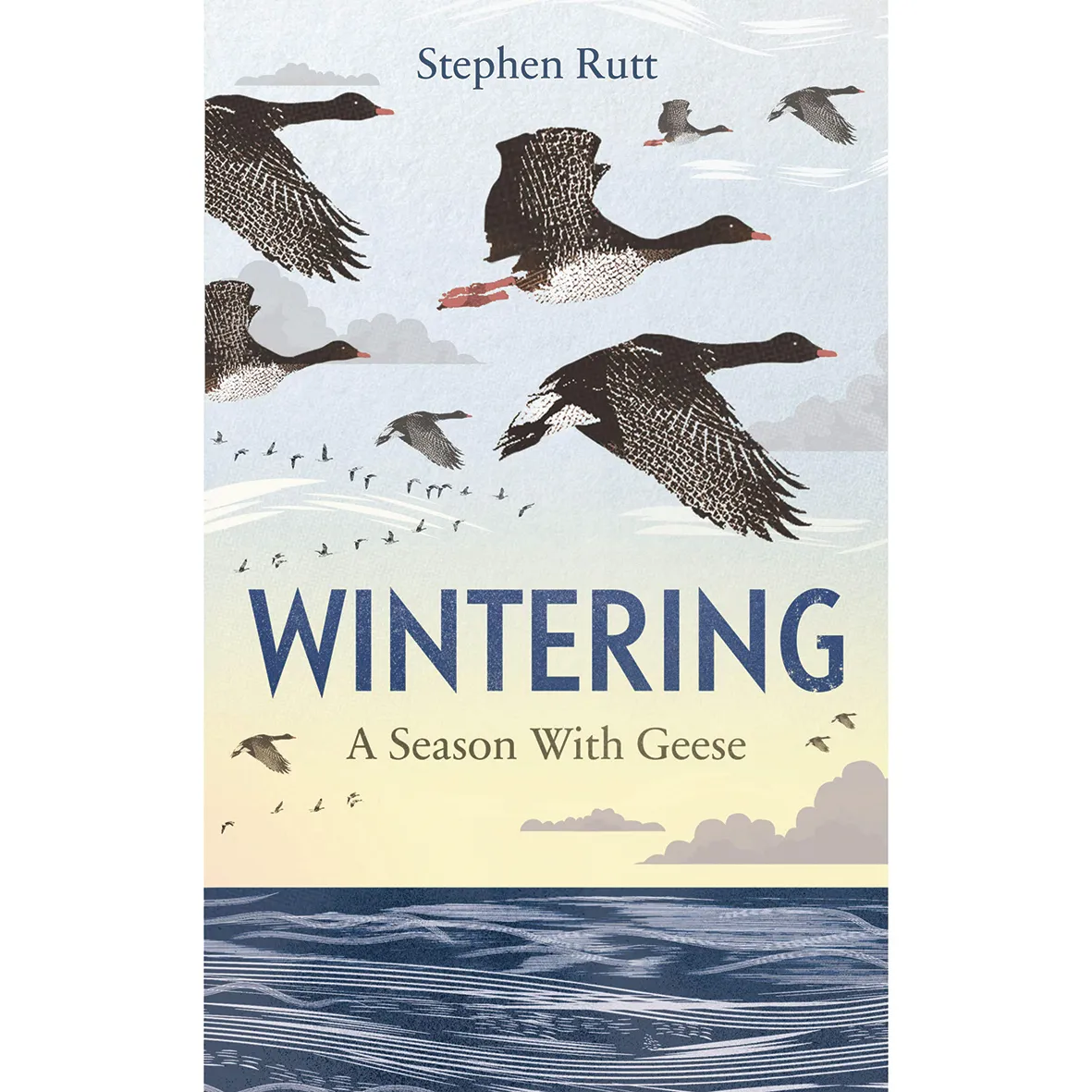
Following a move to Dumfries, birder Stephen Rutt begins a new chapter in his life and a new obsession: with geese. In this compelling book, he delves into the lives and habits of the UK’s most common goose species and looks at the place they hold in our history, culture, and even our festive feasts.
Reviewed Margaret Bartlett, production editor of BBC Countryfile Magazine
Walks in the Wild
Peter Wohlleben, Ebury, £14.99
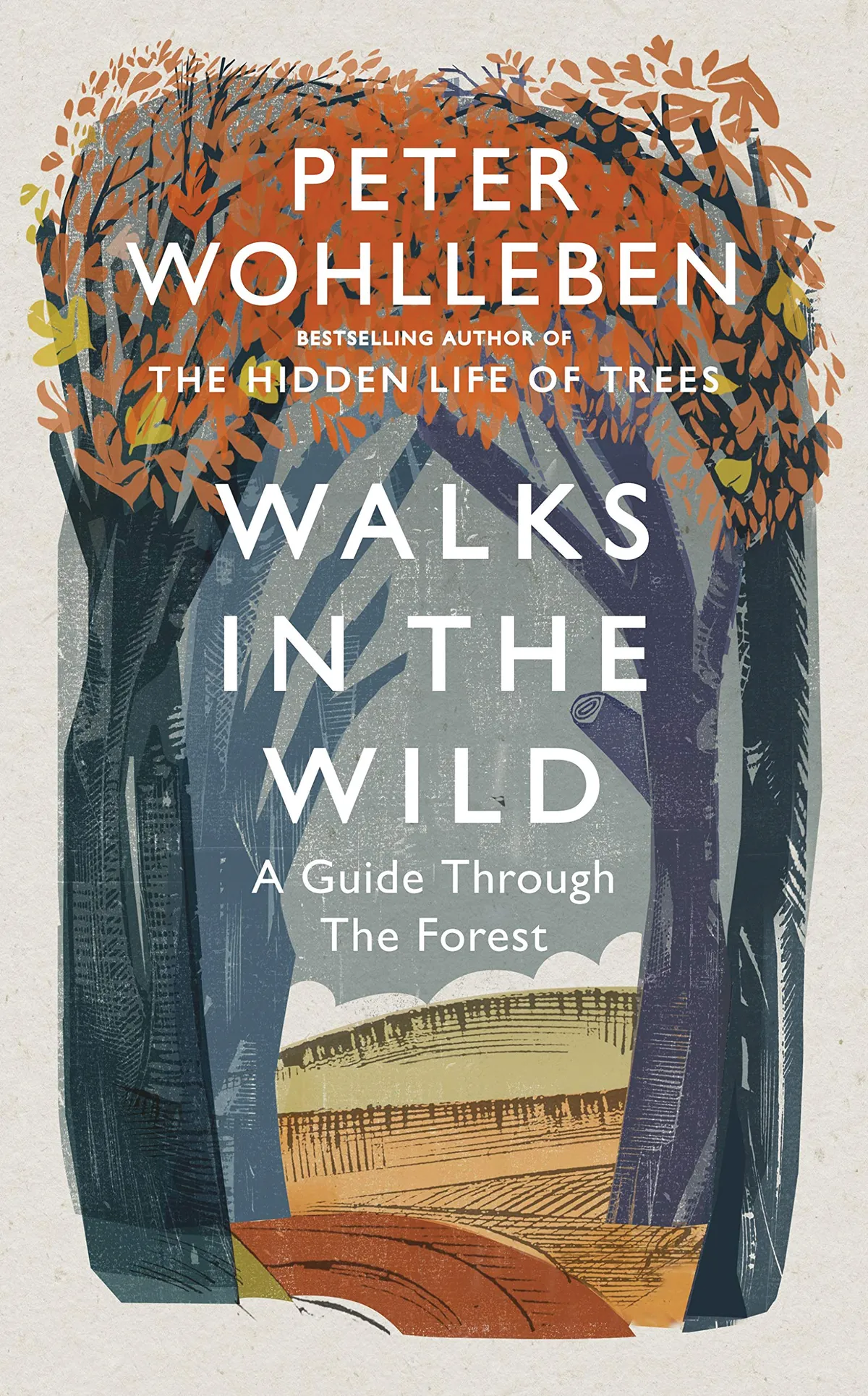
The German forester and best-selling author of The Hidden Life of Trees turns his attention to the wider forest, and presents a handy instruction manual for appreciating and navigating woodlands around the world.
Reviewed by Maria Hodson, production editor of BBC Countryfile Magazine
Mudlarking
Lara Maiklem, Bloomsbury Circus, £16.99
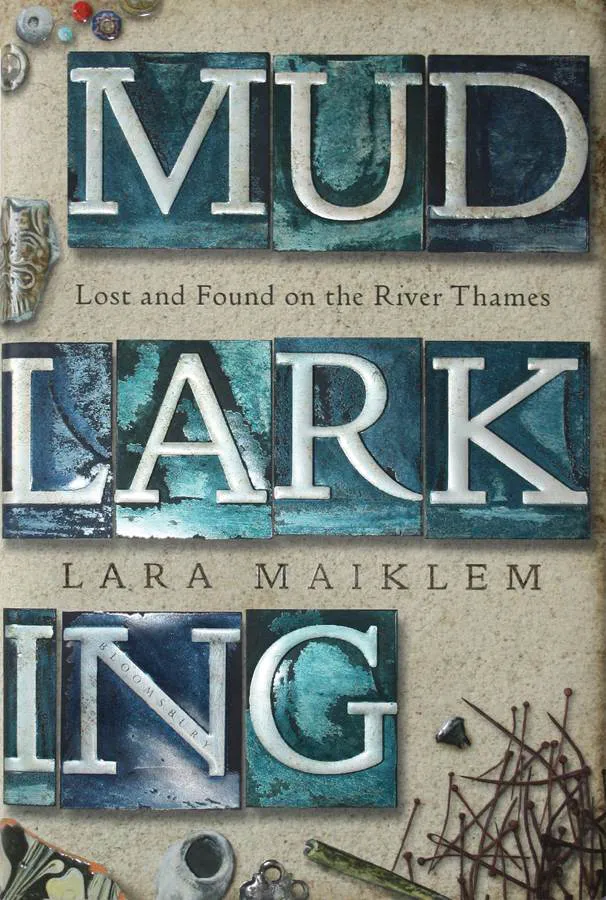
The story of London, told through the Thames’ tidal treasures. For nearly 20 years, author Lara Maiklem has scoured the shores of the capital’s river at low tide, discovering discarded bounty – from Roman hairpins to silver shillings – that evokes long-lost ways of life.
Reviewed by Maria Hodson
A Cloud a Day
Gavin Pretor-Pinney, Batsford, £20
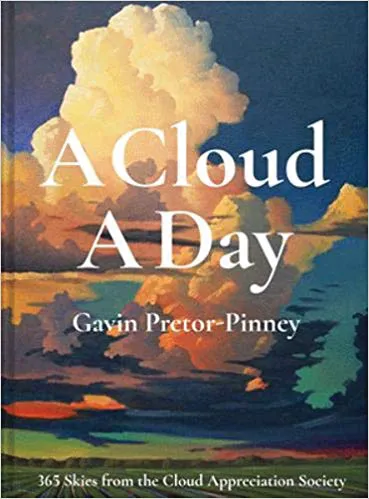
The Cloud Appreciation Society shares its passion for the sky with 365 shots of the phenomenal, ever-changing canvas that shimmers above our heads. The attractive images are accompanied by thoughts, quotations and facts. Put down your phone and look up!
Reviewed by Maria Hodson
Wilding: The Return of Nature to a British Farm
Isabella Tree, Picador, £20 hardback
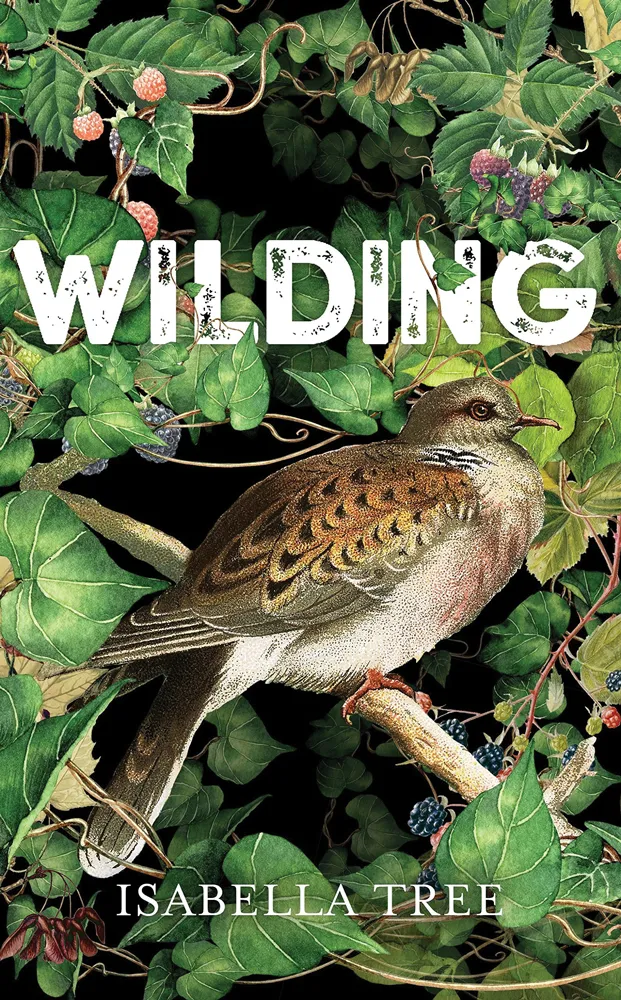
Isabella Tree and her husband found that their Sussex farm kept losing money and what they did in response is an inspiring story that conservationists are calling a “new hope” for our countryside.
Isabella and Charlie decided their Knepp estate would be run with – not against – nature. They embarked on a ‘hands-off’ naturalistic grazing project, using free-roaming herds of animals. Fences were ripped up, drains removed and a river rewilded. The land was “released from its cycle of drudgery” and threatened species began flocking back.
Wilding thrillingly proves that “post-agricultural” land can turn a profit, thanks to income from organic meat, glamping and safaris, backed by enlightened subsidies.
Reviewed by Ben Hoare, author and journalist
Our Place: Can We Save Britain’s Wildlife Before It Is Too Late?
Mark Cocker, Jonathan Cape, £16.99

Mark Cocker outlines the birth of what he calls the “environment age” and the foundation of the three largest conservation NGOs: the National Trust, the RSPB and the Wildlife Trusts. Despite a combined membership of millions for these and other conservation groups, our wildlife has declined remorselessly. He delivers some sledgehammer blows: 44 million birds were lost to our countryside, mainly between 1975 and 1987, while farmers and landowners received huge sums in agricultural subsidies from public taxes.
Our countryside, he argues, has been stripped of much of its wildlife and yet we still support systems that amplify the losses. If we British, with our history of campaigning for our landscape and wildlife, can’t stop the decline, then who can?
Reviewed by Brett Westwood, BBC naturalist
Swifts in a Tower
David Lack, Unicorn, £15 hardback
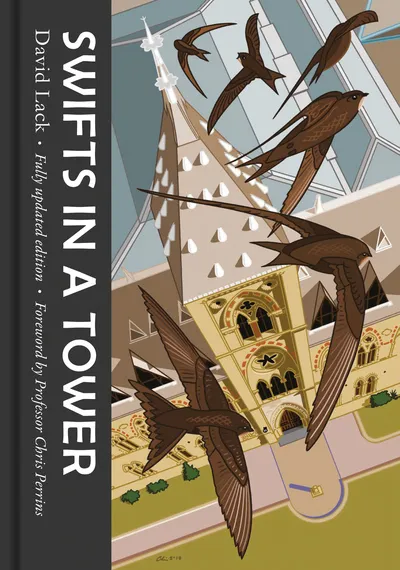
Much of what we know about swifts is thanks to ornithologist David Lack, whose book Swifts in a Tower became an instant classic when published in 1956. His riveting account, based on years of observation at an Oxford museum (the ‘tower’ of the title), was the first to reveal the amazing life story of these avian superstars – which feed, drink, mate and even sleep on the wing, flying hundreds of miles a day to avoid storms and find fair weather.
First editions are highly collectible, so this reissue is excellent value. It concludes with a new chapter by his son Andrew, updating the swift story with the latest information from high-tech gadgets such as GPS tags.
Reviewed by Ben Hoare, freelance writer
Between Stone and Sky: Memoirs of a Waller
Whitney Brown, Constable, £20 hardback
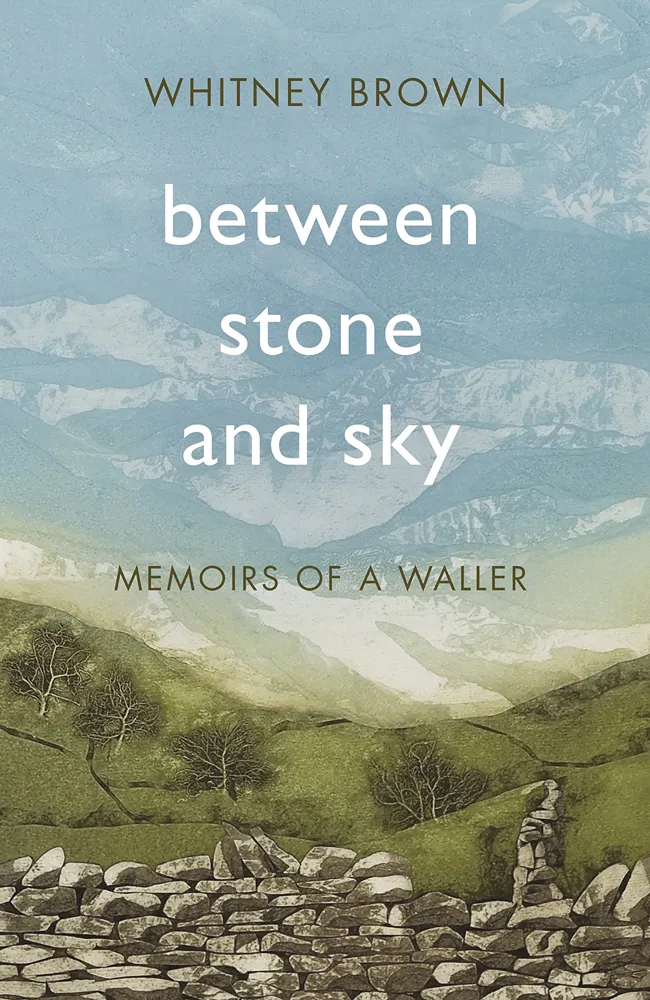
Whitney Brown draws us into her tale of becoming a dry-stone waller. Yes, dry-stone walling: not the most vividly obvious of subjects. But this wonderful book is about much more than that. Between Stone and Sky is a love story. Brown, an American, meets Welshman Jack at a folklore convention in Washington DC. Six months later she’s with him in mid-Wales, learning a new craft.
Brown’s writing about the Welsh countryside, and the Welsh people, is particularly colourful; she captures their earthy warmth brilliantly. The details about walling are also fascinating and empowering: as a woman working on the land. Brown gets to know herself, as she encourages us to find ourselves, in all weathers, in the open air.
Reviewed by Jude Rogers, journalist
All Among the Barley
Melissa Harrison, Bloomsbury, £16.99 hardback

All Among the Barley is a powerful evocation of a restless rural community at a crossroads, when reaping machines, tarmac roads, the wireless and other inventions were starting to challenge long-established ways of doing things. Change was often unwelcome: cheap imported wheat helped the urban poor but left struggling farmers on the breadline.
14-year-old Edie Mather, narrator of this moving story set in the fictional Suffolk village of Elmbourne in 1934, leaves us in no doubt that life on the land could be nasty, brutish and short. Yet there was a beauty too in the old ways, when kinship ties were strong and an agrarian existence still meant following natural rhythms dictated by the seasons.
Reviewed by Ben Hoare
The Old Man and the Sand Eel
Will Millard, Penguin Viking , £14.99
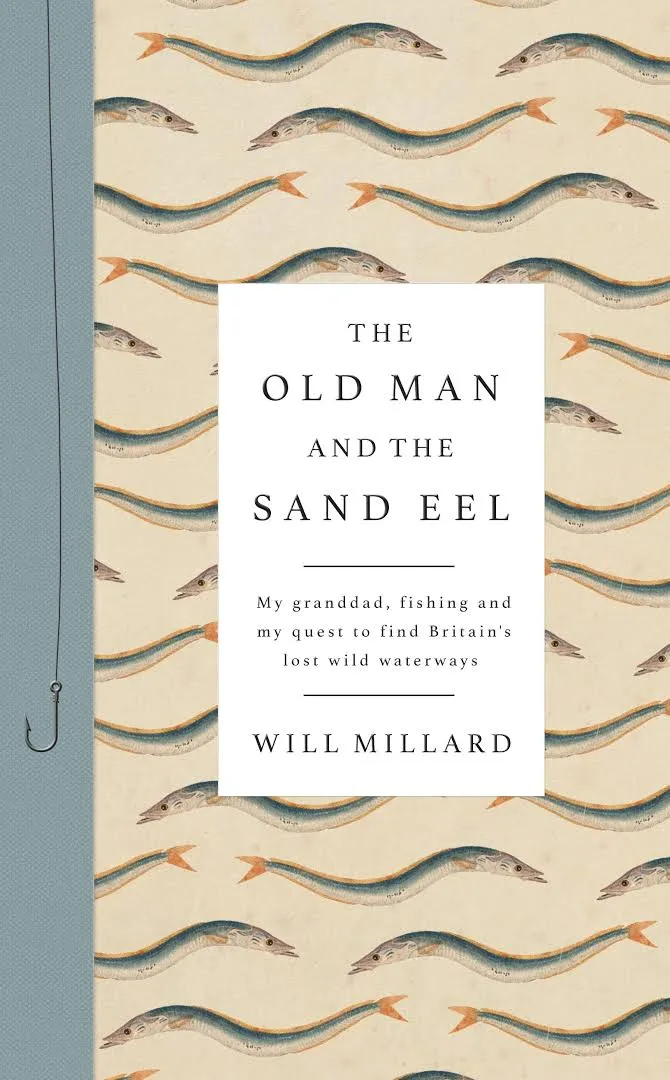
“It’s catching, not fishing,” his grandfather chided as Will Millard boasted of his latest carp fishing exploits. Fish caught from overstocked commercial pools, where the banks are sculpted and the undergrowth neatly clipped, is a wholly different world to the Fenland drains and rivers where Will’s grandfather had taken him as a child.
Following his grandfather’s death, Will begins his angling odyssey afresh. He casts for different species in various places, with a clear, more open-minded perspective. As he rekindles his love for angling, so he learns more about himself.
His awareness of the environment and eye for wildlife resonated as I read, and Will writes with a genuine sense of humility. He is well scarred from a life of travelling and exploration, but his experiences have made him wise. He avoids drifting too deep into memoir, and relates with humour and reflection.
A close shave with poachers in the depths of West Africa is only mentioned because a night beside a canal behind Watford Gap Services has prompted the reminisce. Will has a great depth of knowledge but is also self-aware and happy to walk more carefully the paths down which he once ran.
I often judge an angling book as I would a day’s fishing. If, half-way through, I couldn’t care if another fish is caught, then I know the remaining hours will be a pleasure. As a result, too many books sit on my shelves half-read – this is not one of them.
Reviewed by Kevin Parr, author
A Black Fox Running
Brian Carter, Bloomsbury, £14.99
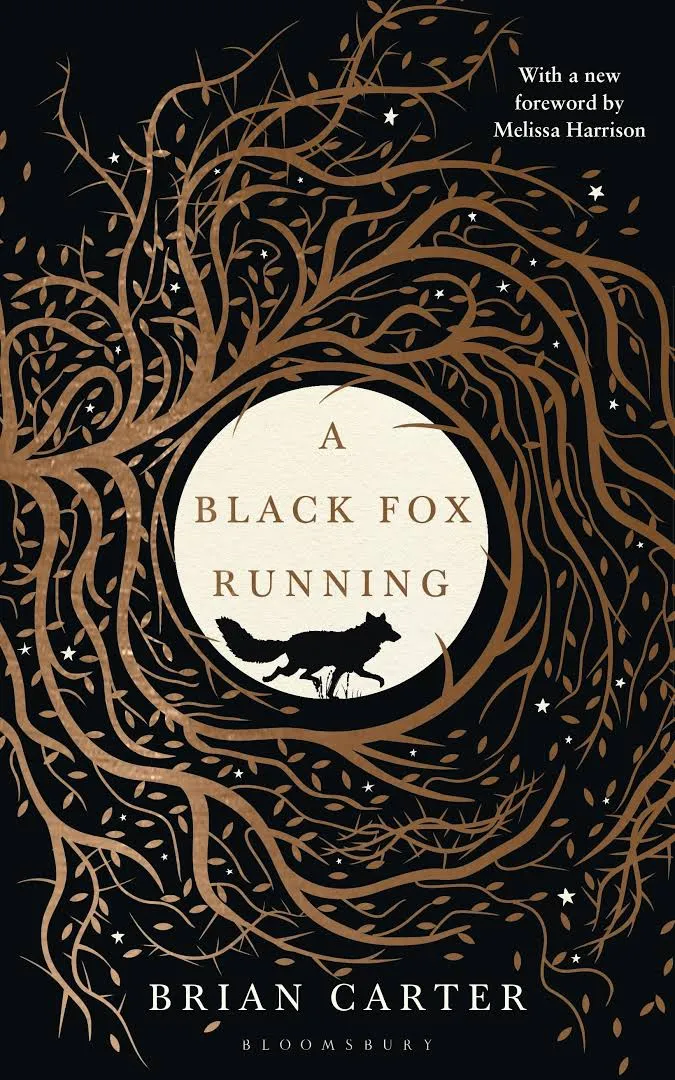
Talking foxes? My hackles raised, the naturalist in me was sceptical… but I was bowled over by this darkly magical tale. Set on Dartmoor after the Second World War, it focuses on Wulfgar – a heroic dark fox with “a brush almost as black as the peaty soil” – and his interactions with foxes, otters, badgers and other animals as they battle to outwit vile Scoble, a lonely trapper burning with hatred for their kind. Scoble is aided and abetted by a lurcher called Jacko, a canine psychopath who (unlike the wild creatures) kills purely to satisfy his bloodlust.
There’s plenty of crunching bones and death, both natural – among predator and prey – and inflicted by human traps, spades and guns. But this bleak realism is balanced by gorgeous nature writing, teeming with earthy scents and sounds, and beautiful descriptions of Dartmoor’s wilderness through the seasons.
Much of the action takes place in the dark or half-light: we’re led at whisker-level over moors and streams into fields and woods as both hunters and hunted travel the landscape. The animal characters joke, grieve, love, form alliances and even have visions. Yet no other book has given me such a powerfully visceral sense of what it might be like to be a wild animal.
First published in 1981 but largely forgotten, Brian Carter’s brilliant tale is now billed as a “lost classic” – rightly so. I can’t get its brooding, gothic imagery out of my head.
Reviewed by Ben Hoare
SQUIRREL_13084737
Swell
Jenny Landreth, Bloomsbury Sport, £8.99
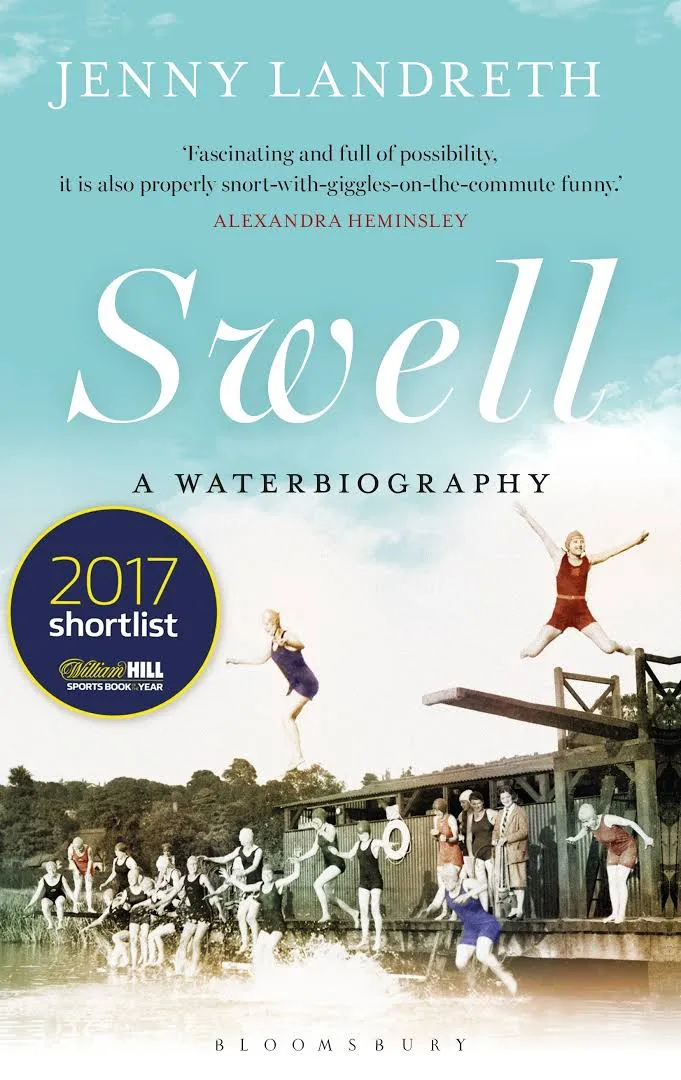
Jenny Landreth is a swimmer, of that there is little doubt. Her vivid descriptions of the meditative peace found in a good swim shine with the liquid intensity of sunlight reflected on rippling water.
Swell, a Waterbiography, tells the story of the early female swimming pioneers, interwoven with Landreth’s own swimming journey, from head up, slow lane, breast stroker to ice-breaking veteran of the iconic Tooting Bec Lido.
Landreth dives deep into the murky misogyny of swimming history, from the Victorian segregation of male and female bathers, to the ludicrous early swimming gear – women were expected to swim in voluminous dresses, shoes and corsets at a time when men swam naked. It is hard to believe now, but women were even arrested for swimming in public, and the first serious women swimmers were chaperoned at all times when competing.
There are many heroes to discover, such as 1920 Olympian Hilda James, the first British woman to learn crawl; the suffragettes who staged swim races to protest their right to vote; and the first amateur women’s swimming clubs, who campaigned for training, and equal access to pools that were open to men, but closed to them.
There are legendary contemporary characters too, such as Freda Streeter, the chain-smoking Dover matriarch who has coached hundreds of successful Channel swimmers – among them Dr Julie Bradshaw MBE, who swam butterfly to France (as if it wasn’t hard enough already).
Ultimately I found myself immersed, thanks to Landreth’s clear love of both the water and those brave women whose stories she uncovered. Asking why women swim, she answers her rhetorical question perfectly: “In a place with nowhere to hide, we are freed, in a way that men don’t need to be freed. We can be ourselves, liberated.”
Landreth’s book is a celebration of liberation, and an essential read for any serious swimmer.
Reviewed by Rosee Woodland
Owl Sense
Miriam Darlington, Guardian Faber, £15.99
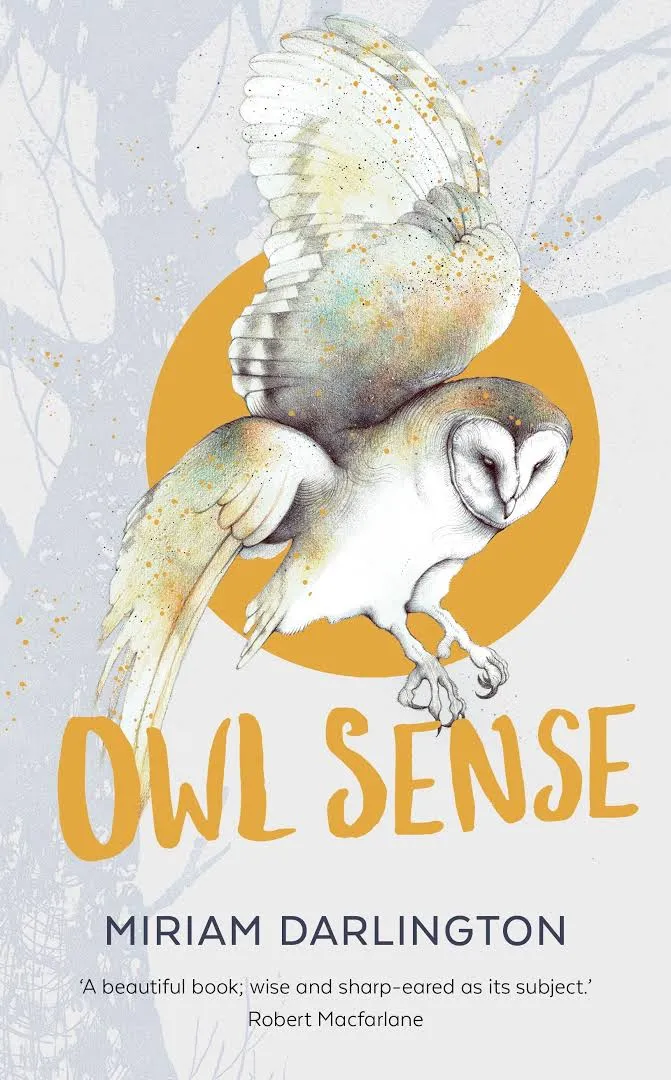
Match the softest, quietest plumage with rapier-sharp talons and hearing, and you have a killer combination, literally. Owls also – more than any other birds – resemble people, thanks to their upright posture, flat faces and penetrating gaze that meets ours. Miriam Darlington delights in exploring such owly adaptations in the follow-up to her highly acclaimed debut Otter Country.
A refreshingly perceptive and modest guide, Darlington sets out to uncover the ecology of all five British owls (barn, tawny, little, long- and short-eared). It’s a familiar approach, but the immensely readable text swoops through myth and legend, too. Owls were often seen as portents of death and ill omen, yet have also been associated with wisdom, prudence and far-sightedness.
Among many fascinating revelations, we learn about the importance of eye colour. Yellow (little) signifies a daylight hunter, orange (long-eared) indicates mainly twilight activity, while dark brown (tawny) points to a nocturnal specialist. Darlington meets plenty of fellow owlaholics along the way (even Florence Nightingale became inseparable from her orphaned little owl). She helps check barn owls chicks, watches a dissection of a tawny, visits an owl festival in Serbia and even joins a psychologist who uses a captive ‘therapy’ owl to treat mental health issues. At one point, as the author crouches on Dartmoor, a hunting short-eared owl almost lands on her head, before, at the last moment, realising its mistake.
Reviewed by Ben Hoare
The Wanderers
Tim Pears, Bloomsbury, £16.99

The Wanderers is the hypnotic second installment in Tim Pears’ West Country Trilogy, picking up where The Horseman ended.
The son of a poor ploughman, 13-year-old Leo Sercombe is making his way alone in the world: he “knew not whether he was blessed or cursed. Wealthy or poor. Free or bound. Joyful or desolate. In time he might discover.” Between the summers of 1912-1914, he travels the West Country, picking up jobs – dogsbody for a pack of gypsies, a few days’ work at a fading copper mine, a season as an ill-paid farmhand.
His nomadic story is interspersed with that of his beloved Miss Lottie, who’s stuck behind on her father’s Devon estate (from which Leo was banished) battling the expectations polite society has for a young lady. That both Leo and Lottie are mourning the loss of the other is never explicitly detailed, but Pears leaves it hanging between the lines, ringing loud in the hollowness of Leo’s restless, itinerant existence, and the silences of Lottie’s lonely life. As in The Horseman, rural living is conjured up exquisitely, the reader sinking into the rhythms of the land. Pears describes a way of life that’s infused with an unspoken nostalgia, as we know how much will change after the Great War, and he cleverly shows things drawing to a close without having to mention the conflict that looms large on the horizon.
Reviewed by Lucy Scholes, writer
The Last Wilderness
Neil Ansell, Tinder Press, £16.99

On a map, some parts of Scotland look ferociously wild – with tight contour lines, deep lochs, huge forests and almost no tracks or human dwellings. I often ask, what can be there and will I ever get the time to explore?
Fortunately, Neil Ansell has devoted his life to the roads less travelled – especially where there are no roads. Here he spends a year on a number of expeditions roaming the extraordinary peninsulas from Mallaig to the Sound of Mull. The names, beautiful though they are (Knoydart, Morvern, Morar, Ardnamurchan), are not as important as Ansell’s journey to find wilderness – or perhaps escape mundanity. He camps on empty beaches, walks over seldom-conquered peaks, steps through forests where only deer tread. Occasionally he meets wild human spirits – fellow wanderers and bothy hunters – and he has extraordinary wildlife encounters with otters, eagles and even pilot whales.
The undercurrent seems to be Ansell’s internal restlessness, his need to be alone in the wild coupled with tackling a serious heart problem. Worst of all, his ability to hear high-pitched sounds is deteriorating – his “the journey into silence”. This means no more sandpipers and willow warblers – a heartrending loss to someone who loves the natural world. And yet the remaining beauty seems enough for him to find peace.
Reviewed by Fergus Collins
Yorkshire
Richard Morris, Weidenfeld & Nicolson, £25
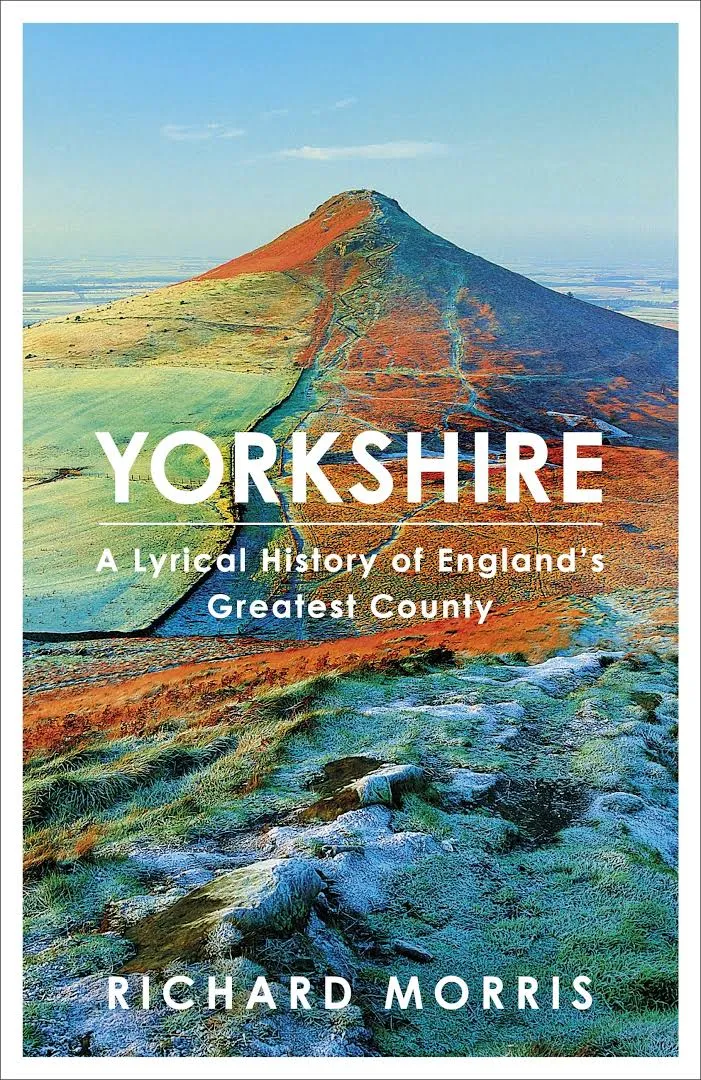
We all have our preconceptions about Yorkshire, its landscape, people and history. Our thoughts will be a mix of straight-talking characters, dales, moors and rivers, heavy industry, classic seaside resorts, Emmerdale villages and gritstone towns.
In his lyrical history, Richard Morris takes us on an epic journey through England’s greatest county in search of Yorkshire’s identity. With a strong personal connection to the county, Morris weaves in stories of everyday Yorkshire folk alongside the more obvious names from history.
Inevitably with a subject as vast as our largest county, it’s impossible to cover every aspect of what makes Yorkshire special. Instead, the author focuses on linking the social history to its industry and landscape. He illustrates how the geology of the county has influenced everything from its landscape to its trade, industry and communications. On a journey through Yorkshire’s three ridings, Morris takes us through the Roman occupation, medieval era, Civil War, the Industrial Revolution and into modern times.
It’s fascinating to discover the extent to which Yorkshire has been at the heart of England’s history and that through trade, whaling and emigration, the county has had a significant impact on the wider world. This is a welcome addition to the bookshelf for the Yorkshire enthusiast, as well as those seeking their first introduction to this magnificent county.
Reviewed by Chris Gee, freelance writer
Lost Lanes West
Jack Thurston, Wild Things Publishing, £16.99 paperback
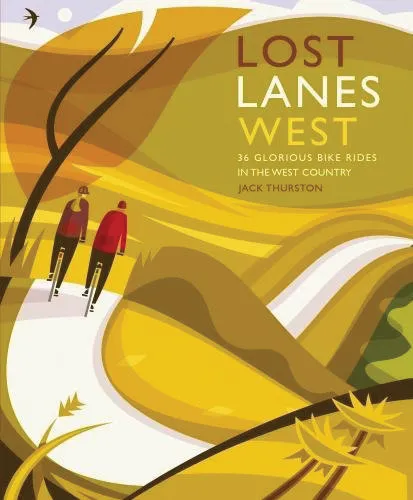
Lost Lanes West offers the slow cyclist 36 well-researched routes where time is forgotten and the beauty of the South West unfurls in all its glory. This lovely travelogue encompasses all the tips that the slow traveller needs to discover the traffic-free hidden gems that make cycling in today’s fast world such a joy. The premise of the book is not to clock up miles in super quick time, but to enjoy the wonders of the South West.
Reviewed by Philippa Cox, cyclist and writer
The New Complete Book of Self-Sufficiency
John Seymour, DK, £25
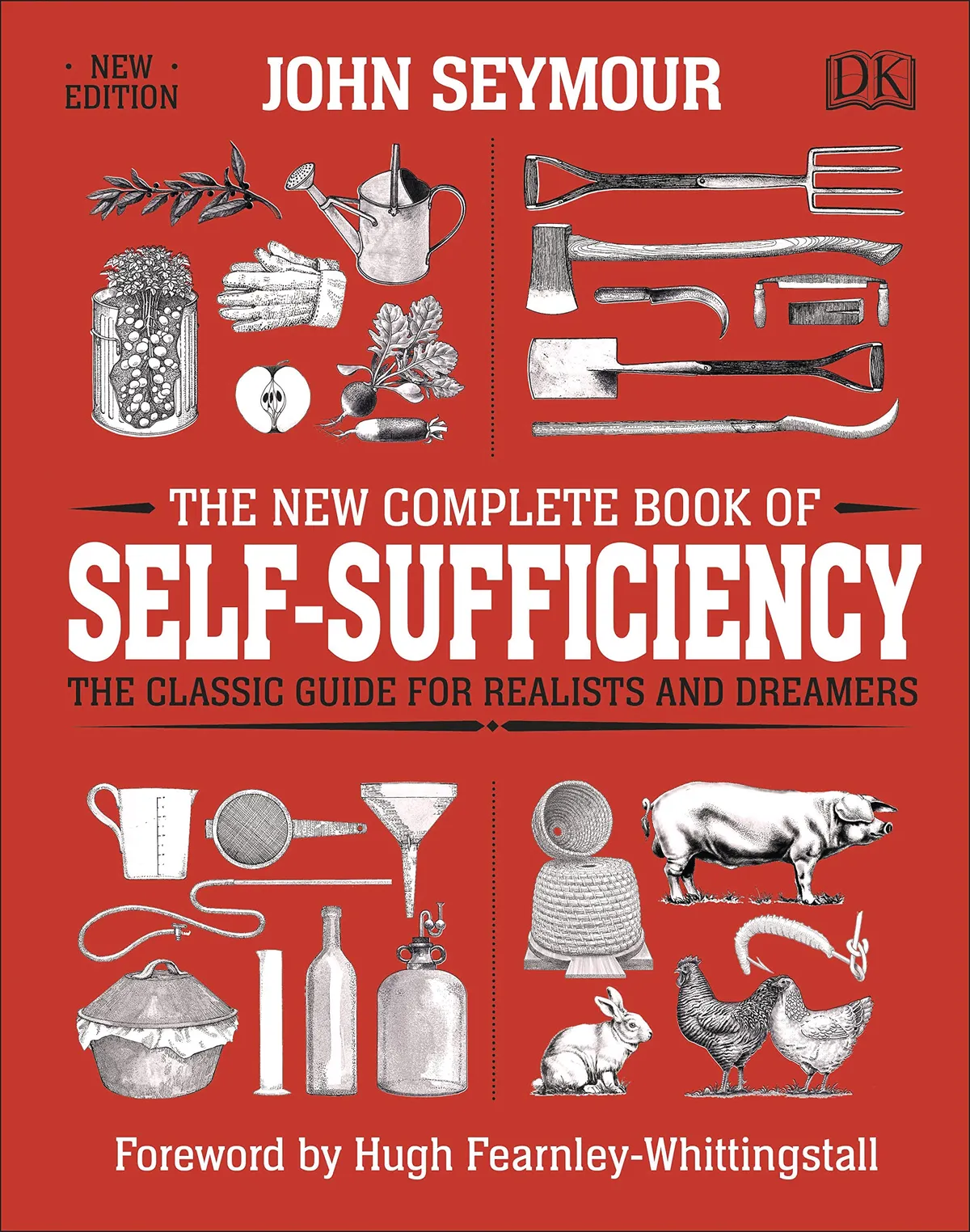
First written 40 years ago, this enormous, encyclopaedic tome is packed full of tips for those keen to embark on the good life of self-sufficiency. Complete with handy illustrations, this is the bible of off-grid life, from growing veg and raising livestock to making wine and powering your plot.
Reviewed by Maria Hodson
Best nature books for children
The Wonders of Nature
Ben Hoare, DK Children, £20
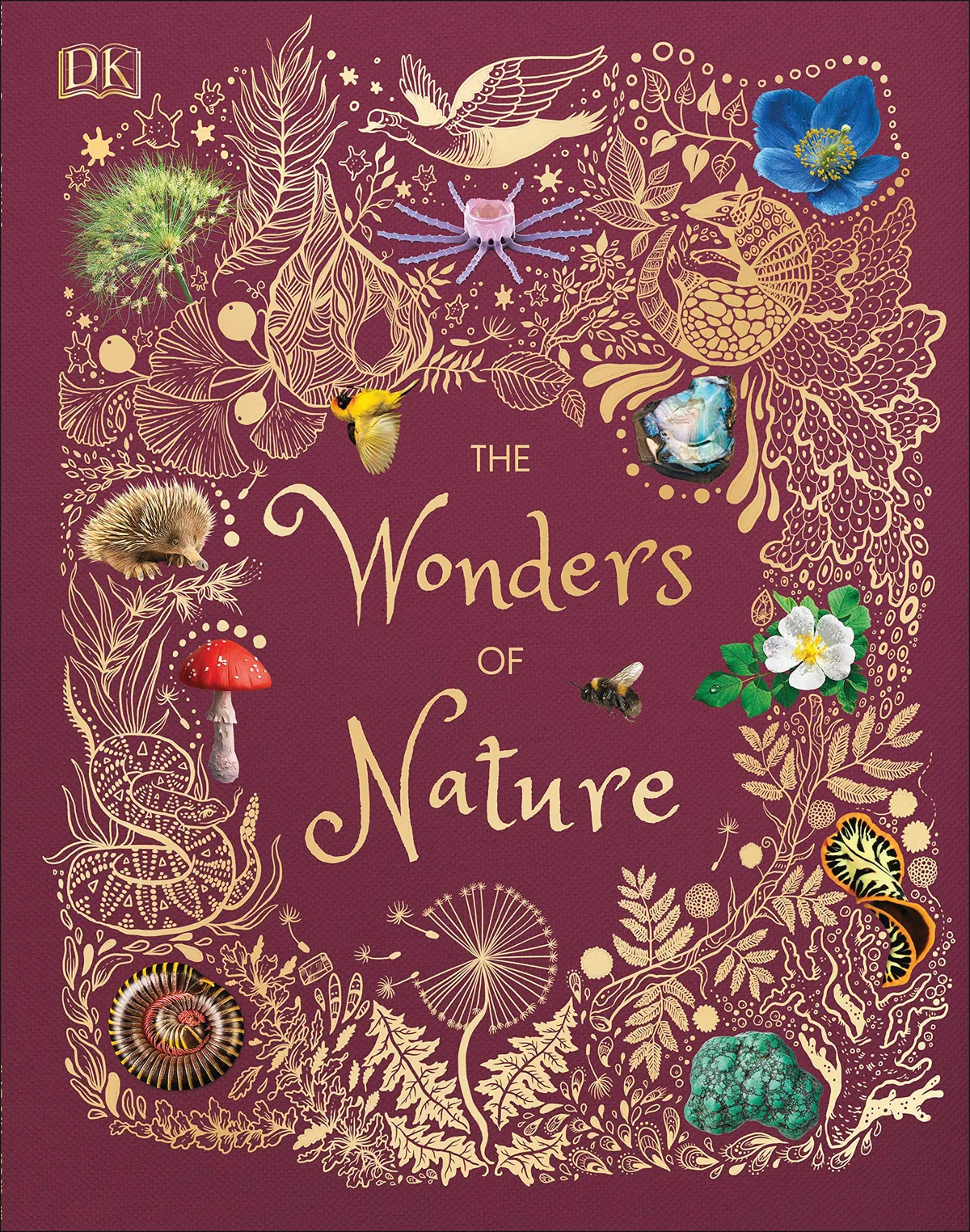
A charming jaunt through the remarkable species that inhabit our planet. Divided into four sections (rocks and minerals, microscopic life, plants and animals), the lively text and beautiful photographs and illustrations make this directory ideal for inquisitive young readers.
Reviewed by Maria Hodson
Find 40+ wildlife and nature books for children and teenagers on discoverwildlife.com
Best gardening books
Walled Gardens
Jules Hudson (National Trust books, £30)
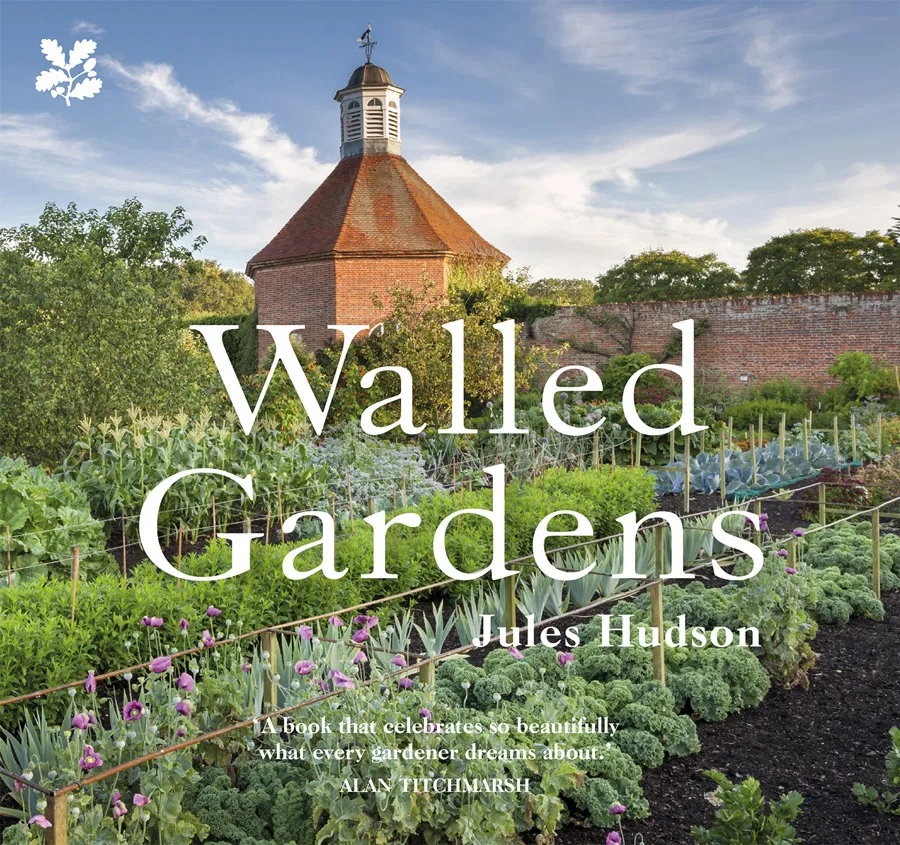
For centuries, walled gardens have provided food and flowers to great houses. Starting as simple medieval enclosures, they evolved into powerful status symbols and centres of world-class expertise. During 20th century most were lost and abandoned but, happily, today many have been revived.
Presenter, archaeologist and historian Jules Hudson describes himself as “an enthusiastic amateur gardener” and here he explores the British walled garden in the context of Britain’s historical and cultural heritage. Hudson reveals the clues apparent to “anyone who knows what to look for” that will tell the story of a garden’s past, and applies this knowledge to 12 walled gardens, all of which are publicly open. From the Blickling Estate in Norfolk that was the family seat of Sir Thomas Boleyn, father of Anne, to Chartwell garden in Kent that was built brick by brick by Winston Churchill with his own hands, the stories are fascinating.
I poured over the beautifully illustrated plan of what a complete and perfect walled garden might look like in part one of the book, but otherwise, horticultural information is scant. There are few named plants, either edible or ornamental, which felt like a missed opportunity.
The list of walled gardens to visit at the end of the book is great. Ultimately this is an insightful guide for anyone wanting to visit gardens on days out.
Reviewed by Lucy Bellamy
Buy from Amazon
Best cookbooks
30 Easy Ways to Join the Food Revolution
Ollie Hunter, Pavilion Books, £14.99 (HB)

After reaching the semi-finals of MasterChef and gaining accolades for his pub’s sustainable sourcing, chef Ollie Hunter’s contribution to the sustainable diet debate is full of promise.
He proposes 30 simple ways the average person can switch to a more environmentally friendly way of eating, with each principle accompanied by a basic background and a few tantalising recipes – from homemade Worcestershire sauce to beetroot-leaf dhal – that shows the concept in action.
While the book is based around breaking the rather complicated topic of sustainable eating into simple concepts, such as root-to-fruit eating and the hungry gap, this simplicity is ultimately where it misses the mark. It is, quite simply, a little light on information. While issues such as meat eating are well explored, rather significantly in a book about sustainable eating, there is no mention of the importance of environmentally friendly farming practices beyond the suggestion that organic food tastes better. With the best of intentions, Hunter suggests the use of substitute ingredients, such as dried broad beans or sunflower seeds, without addressing how to ensure these are UK-grown rather than imported.
For the newly curious, this is a useful, colourful and gentle introduction to some of the issues, accompanied by some unusual and tempting recipes that can slot easily into everyday cooking, while more knowledgeable readers will still find sustenance in preparing Hunter’s delicious dishes.
Reviewed by Steph Wetherell, food writer
Food You Can Forage
Tiffany francis (Bloomsbury Natural History, £16.99 paperback)
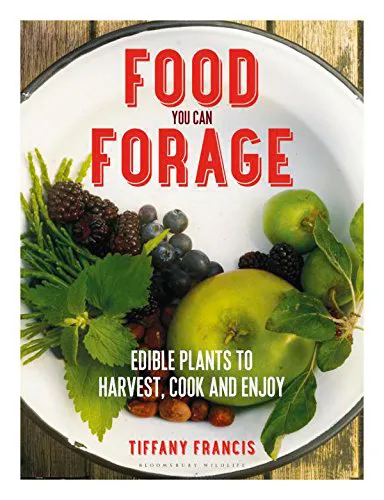
This pretty book is packed full of colourful photographs and illustrations to help the reader safely identify edible plants. Tiffany Francis offers a good introduction to the ancient art of foraging, with easy-to-follow advice on the edible plants you can find in the countryside. The book includes chapters on foraging in woodlands, the coast, heathland and meadows, along with details about the wildlife you might find there. The final chapter includes 20 traditional recipes.
This is an ideal book to dip in and out of, and compact enough to take on shorter nature rambles. Overall, a refreshing read and the writer’s passion for nature shines through.
Reviewed by Carys Matthews
Ready to get out and about? See our list of the best UK-based, non-fiction adventure books to read:
